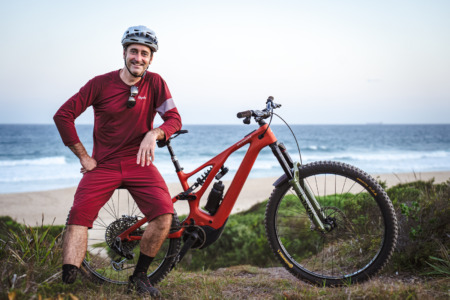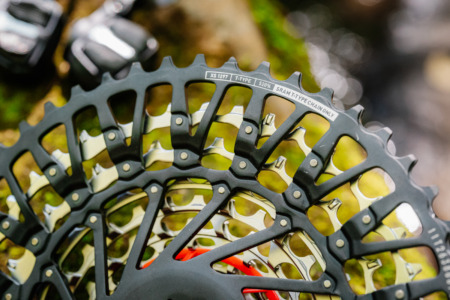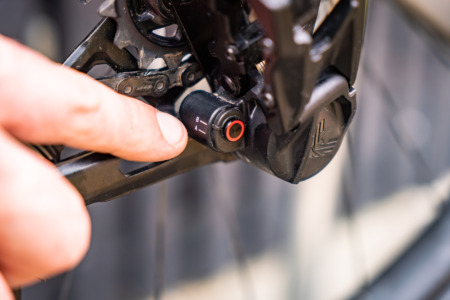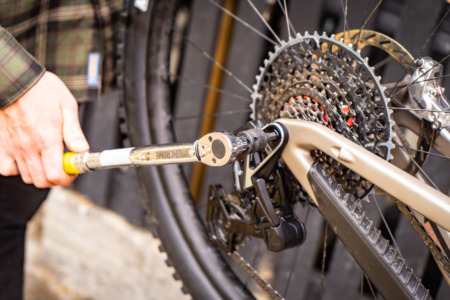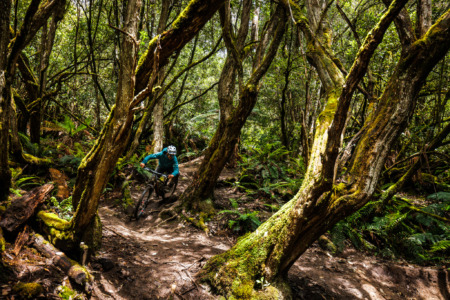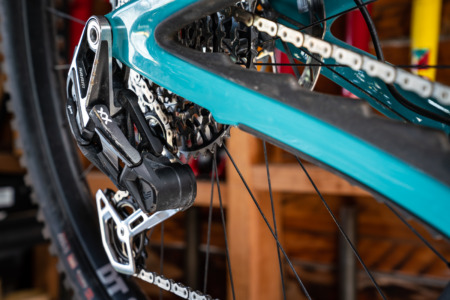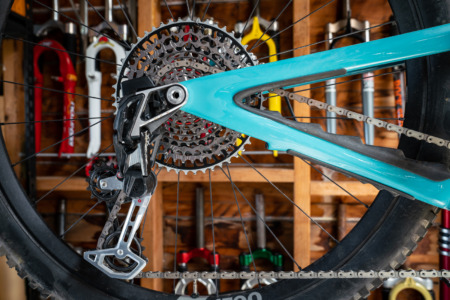Mick & Wil review the new SRAM XX Eagle AXS T-Type transmission
After much teasing with plenty of planned and unplanned leaks, today sees the long-awaited arrival of the new generation SRAM XX Eagle AXS T-Type drivetrain. Well to be a bit more specific, there are three new drivetrains; X0, XX and XX SL. Oh, SRAM isn’t calling them drivetrains anymore. They’re transmissions, ok?
All three of these new transmissions are based around a brand new direct mount rear derailleur that waves goodbye to the traditional hanger that we’ve grown to love and hate over the years. Why get rid of the hanger? And what else has changed with SRAM’s new flagship mountain bike components?
We’ve been testing two SRAM XX Eagle AXS T-Type transmissions over the past six months, and here we’ll be diving deep into the details to answer those questions. We’ll be discussing our long-term experience, while breaking down the nine key reasons why we think this is such a big deal.
Watch our SRAM XX Eagle AXS T-Type transmission video review here:
Following six months of solid testing, it’s clear that the SRAM XX Eagle AXS T-Type transmission represents an evolutionary leap for the modern mountain bike drivetrain.

An overview of the SRAM XX Eagle AXS T-Type transmission
The SRAM XX Eagle AXS T-Type transmission is a brand new wireless groupset that represents a significant evolution over the first generation AXS drivetrain.
It still features a 10-52T cassette with 12 gears and an XD interface, but the construction has changed, the ratios have been updated, and it now features a full X-Sync (narrow-wide) profile throughout.
The chainring teeth have also been refined, and there’s a new matching Flattop chain to suit. All of the drivetrain components receive the new ‘T-Type’ designation, which helps to distinguish them from the previous 12-speed drivetrains. According to SRAM, the new T-Type components are not backwards compatible.
You’ll find a new design for the controller pods, which are smaller, more adjustable and more tactile compared to the old AXS controllers.
It’s at the derailleur where the most striking update can be found. Adopting a unique direct mount design that forgoes the need for a traditional derailleur hanger, the distinctive-looking mech comes with some bold claims regarding its performance and durability.
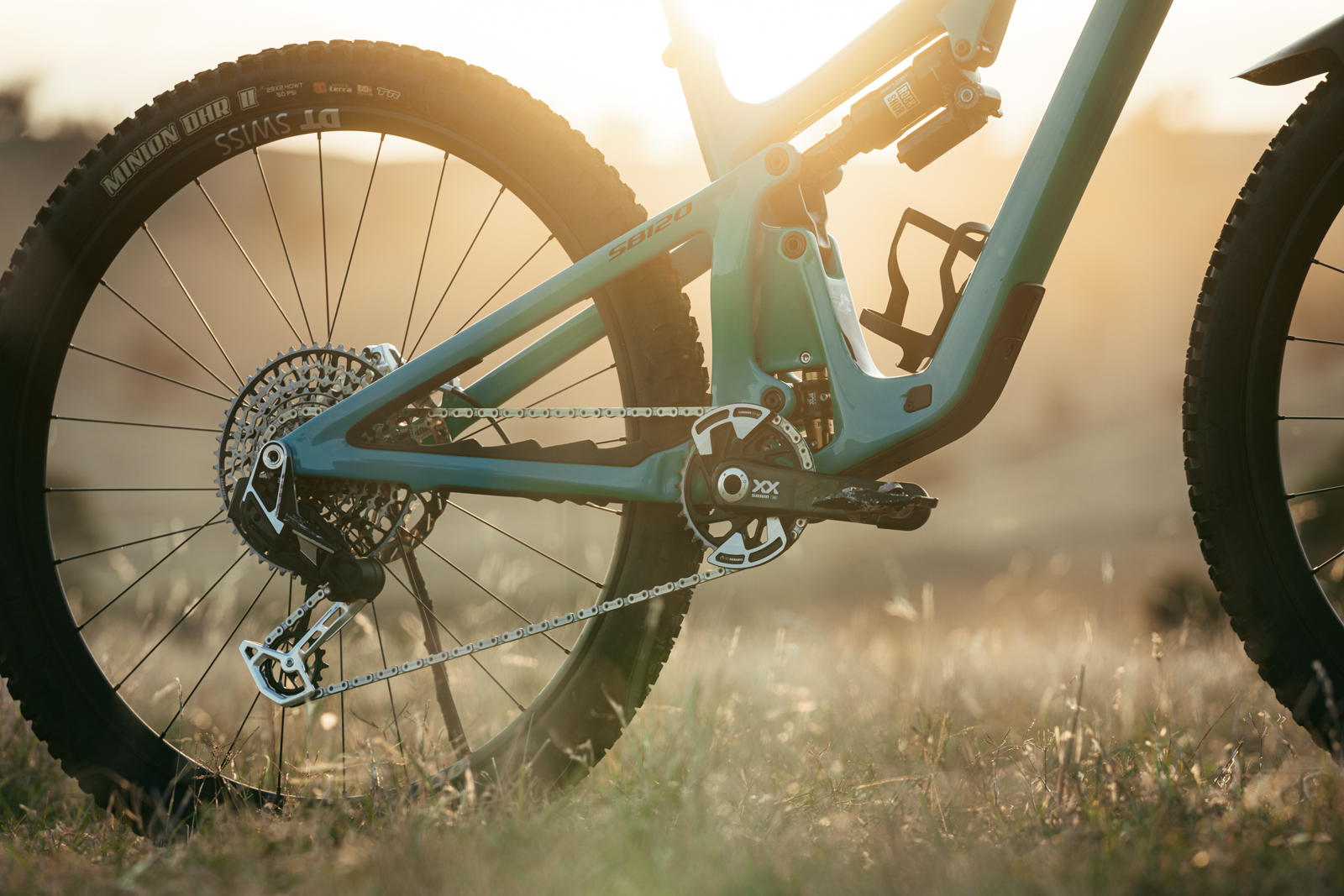
Good riddance, you stupid derailleur hanger!
That’s right folks, the new SRAM XX Eagle AXS T-Type transmission no longer relies on a derailleur hanger. You can ditch your fancy hanger alignment tool, and you can also forget about fiddly limit screws and measuring the B-gap while you’re at it. That’s because there are no limit screws or B-gap adjustments on the new derailleur. Seriously.
Instead of requiring a hanger, the new SRAM XX Eagle AXS T-Type derailleur mounts directly to the frame, using the rear thru-axle as its structural anchor point. It’s designed specifically for frames that utilise a UDH dropout, which means that SRAM has complete control over the dimensions between the cassette, dropout and derailleur. And because all of these variables are now standardised, the derailleur doesn’t need to be limited in its movement. It knows exactly where the 10T sprocket starts and where the 52T sprocket finishes, and it only needs to perform each shift in between. No more, no less.
Since there’s no hanger to align or limit screws to tune, setup with new transmission is the fastest and simplest we’ve ever experienced.
There’s no need to sit on the bike and measure the B-gap at sag, like you do with the old SRAM Eagle derailleurs. In fact, there’s no need for a B-gap tool at all anymore.
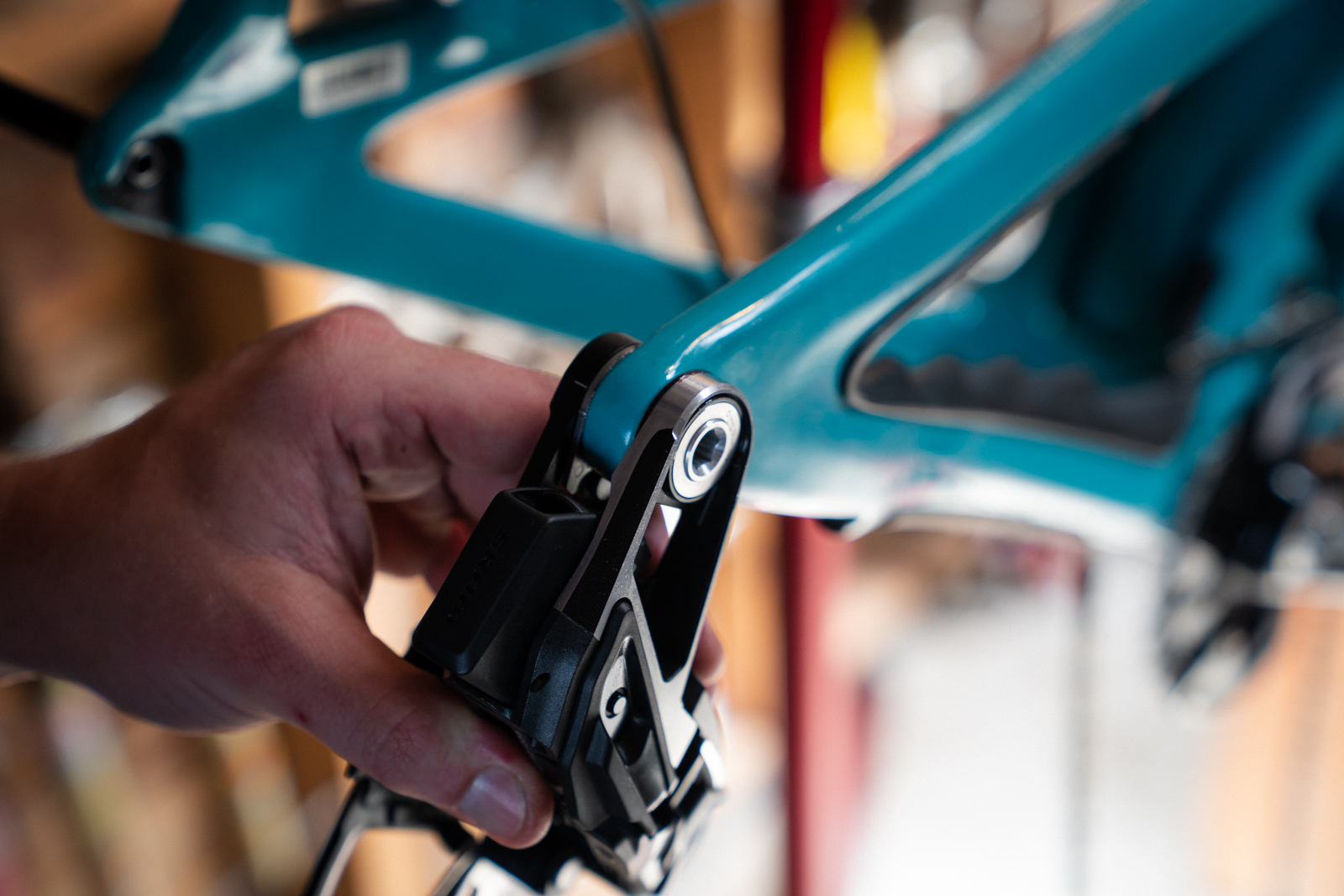
You first pair the controller and derailleur, then trim the chain to length. To help with this, SRAM has produced a handy chart with recommended chain lengths based on your bike’s chainstay length and chainring size.
It’s then a case of bolting on the derailleur so it’s slightly loose, shifting it into the red setup cog, and positioning the cage in the setup mode. There’s an offset chip with two settings; A is for XC hardtails, and B is for pretty much everything else. You then pull the derailleur backwards to tension the chain, torque the main bolt to 35Nm, and tighten up the thru-axle.
And, well, that’s pretty much it.
There’s no need to sit on the bike and measure the B-gap at sag, like you do with the old SRAM Eagle derailleurs. In fact, there’s no need for a B-gap tool at all anymore. Aside from a chain breaker, the only tools you need for install are a T25, an 8mm hex key and a torque wrench.
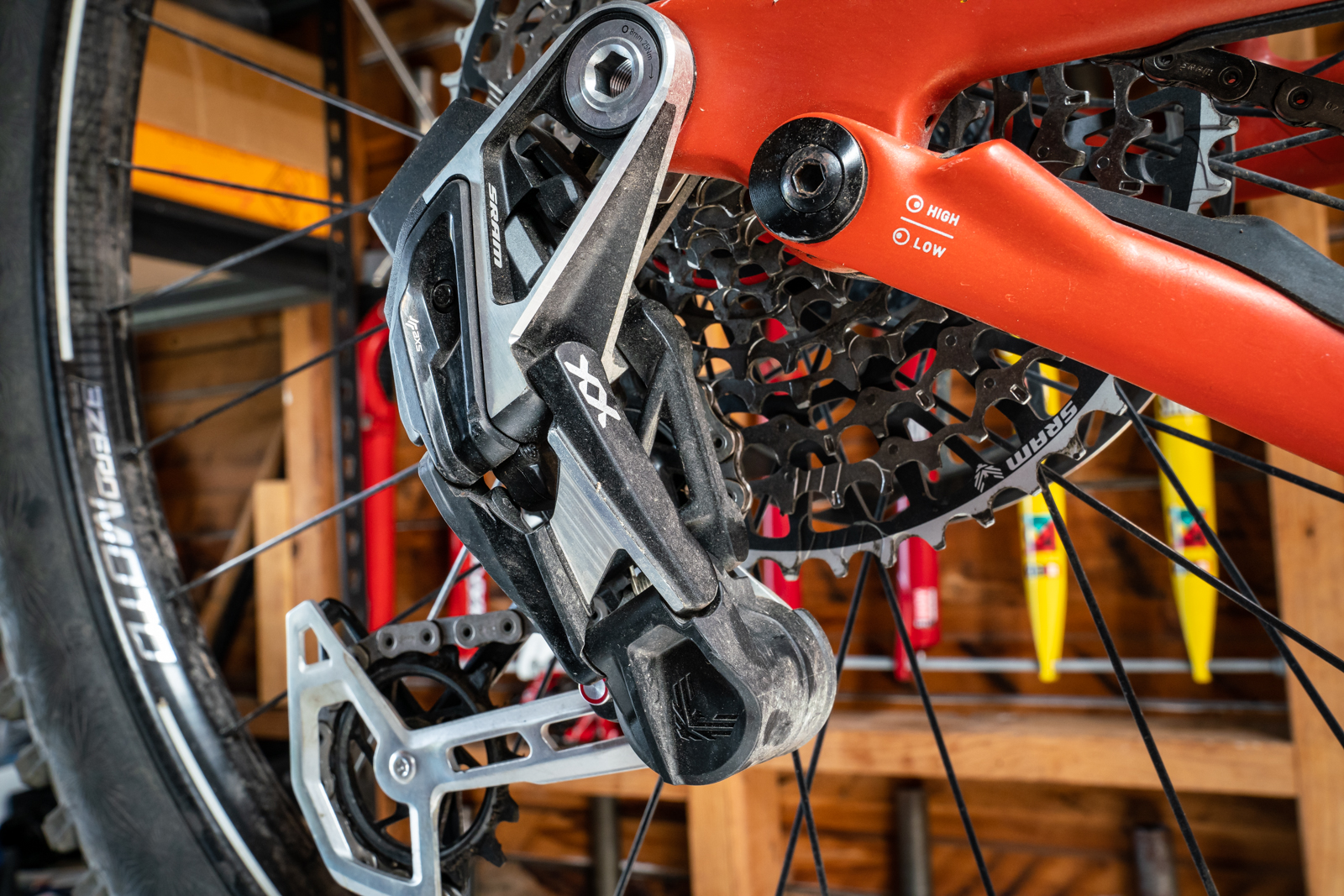
It’s so quiet
On the trail the first aspect we noticed, or more accurately didn’t notice, is just how quiet the new SRAM XX Eagle AXS T-Type transmission is.
SRAM has fully optimised the new transmission around a 55mm chainline, which we’ll discuss in more detail in a bit. This, combined with the new T-Type tooth profile and Flattop chain has resulted in a seriously smooth interface between all the meshing gear surfaces.
You may also notice the derailleur’s enlarged jockey wheels. The upper wheel is now 13T (up from 12T) and the lower is 16T (up from 14T). This decreases the chain wrap angle, which helps to reduce friction as the chain glides its way through to the cassette.
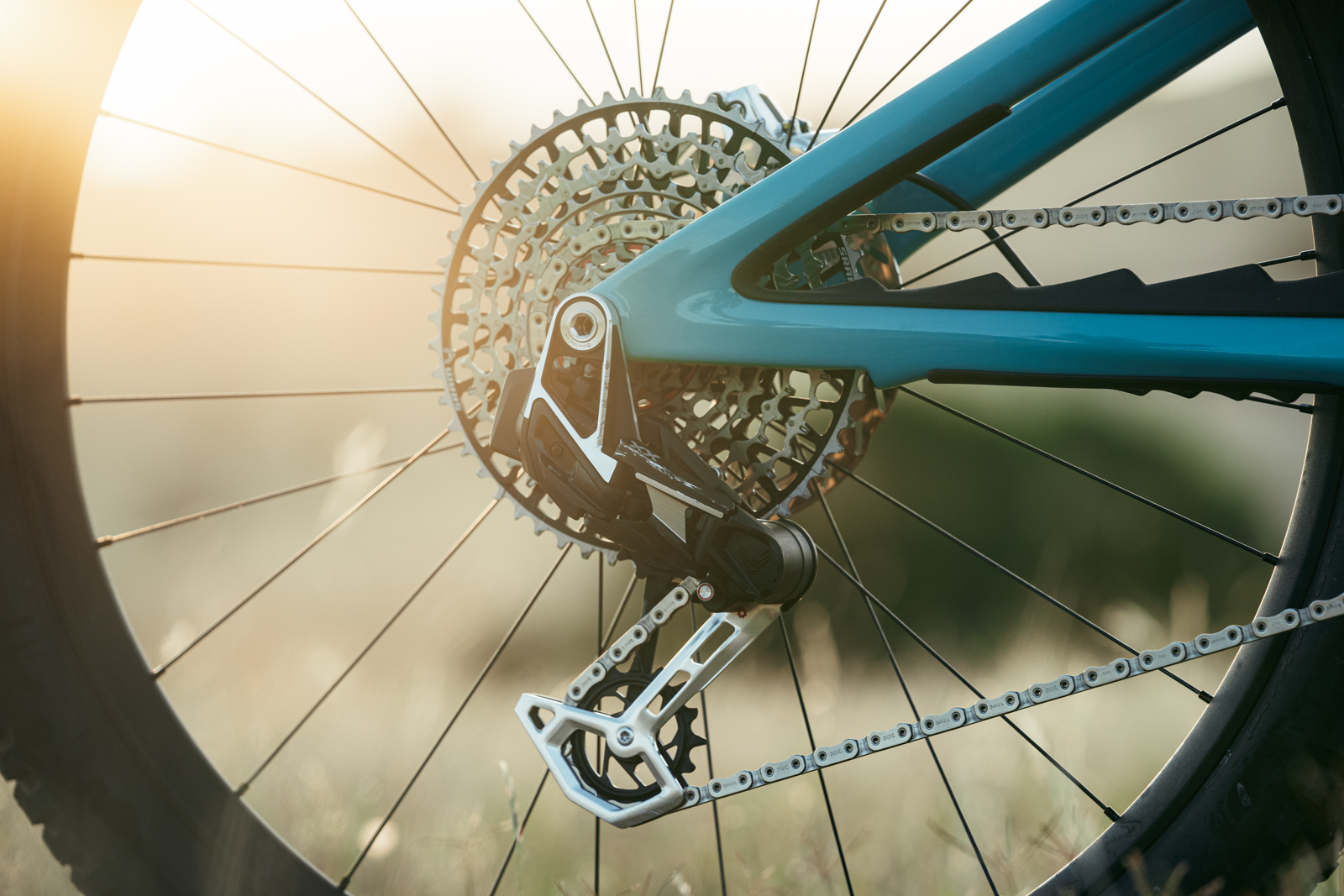
SRAM has also increased the derailleur cage’s clutch force, which results in a higher level of chain tension. The old AXS derailleurs tended to slap around during harder impacts, which was exacerbated by movement against the B-gap screw. Because the new derailleur doesn’t have a B-gap screw to begin with and it puts more tension on the chain, there is considerably less bouncing and noise over rough terrain.
Shift performance is similarly quiet and satisfyingly accurate. There’s still a small ‘whirr’ from the derailleur’s motor, which is followed by a crisp ‘snap!’ as the chain settles into place.
The result is that it’s virtually impossible to mis-shift with the new SRAM transmission, resulting in less noise and disturbance to your pedalling rhythm.
A big part of this is the chunky direct mount derailleur, which produces a much stiffer interface compared to a conventional derailleur hanger. As a result, shifts are sharper and more direct.
The jumps between each gear at the low end of the cassette have also been tightened. This reduces the mechanical gymnastics the chain has to perform when moving up to the biggest sprocket, and it also results in less disturbance to your cadence.
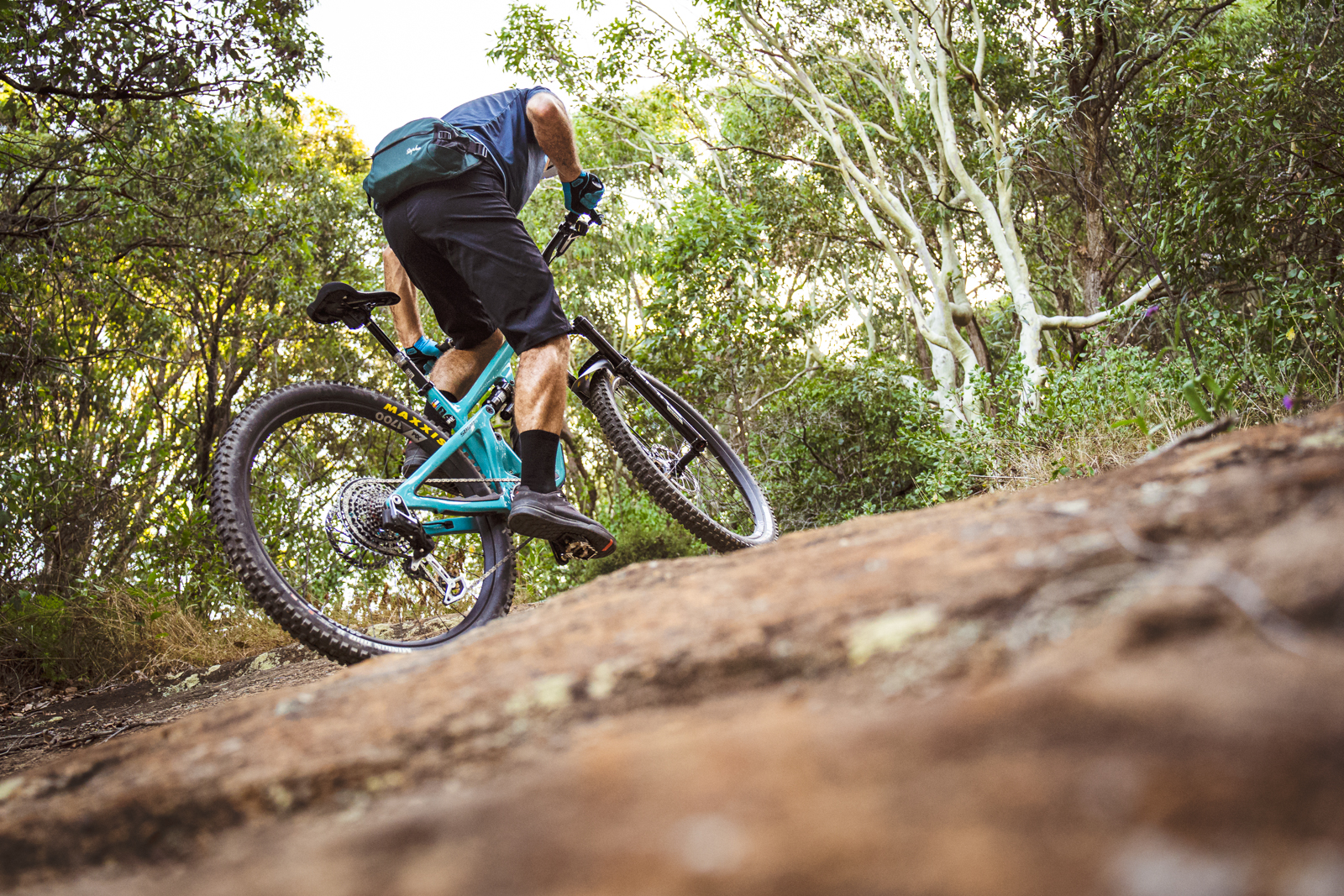
Smart shifting
Another big contributor to shift performance is the updated X-Sync tooth design. With the exception of the setup cog (which has an odd number of teeth), all of the cassette sprockets use a narrow-wide profile. This helps to improve the shift accuracy by creating a very specific gate for the chain to transition between cogs.
Additionally, if you decide to dump 3-4 gears at one time, the derailleur won’t attempt to do all of that in one hit. Instead it hesitates slightly, giving the chain a chance to hit one of those gates before completing the shift. After the chain has properly engaged the sprocket, the derailleur will then move on to the next shift.
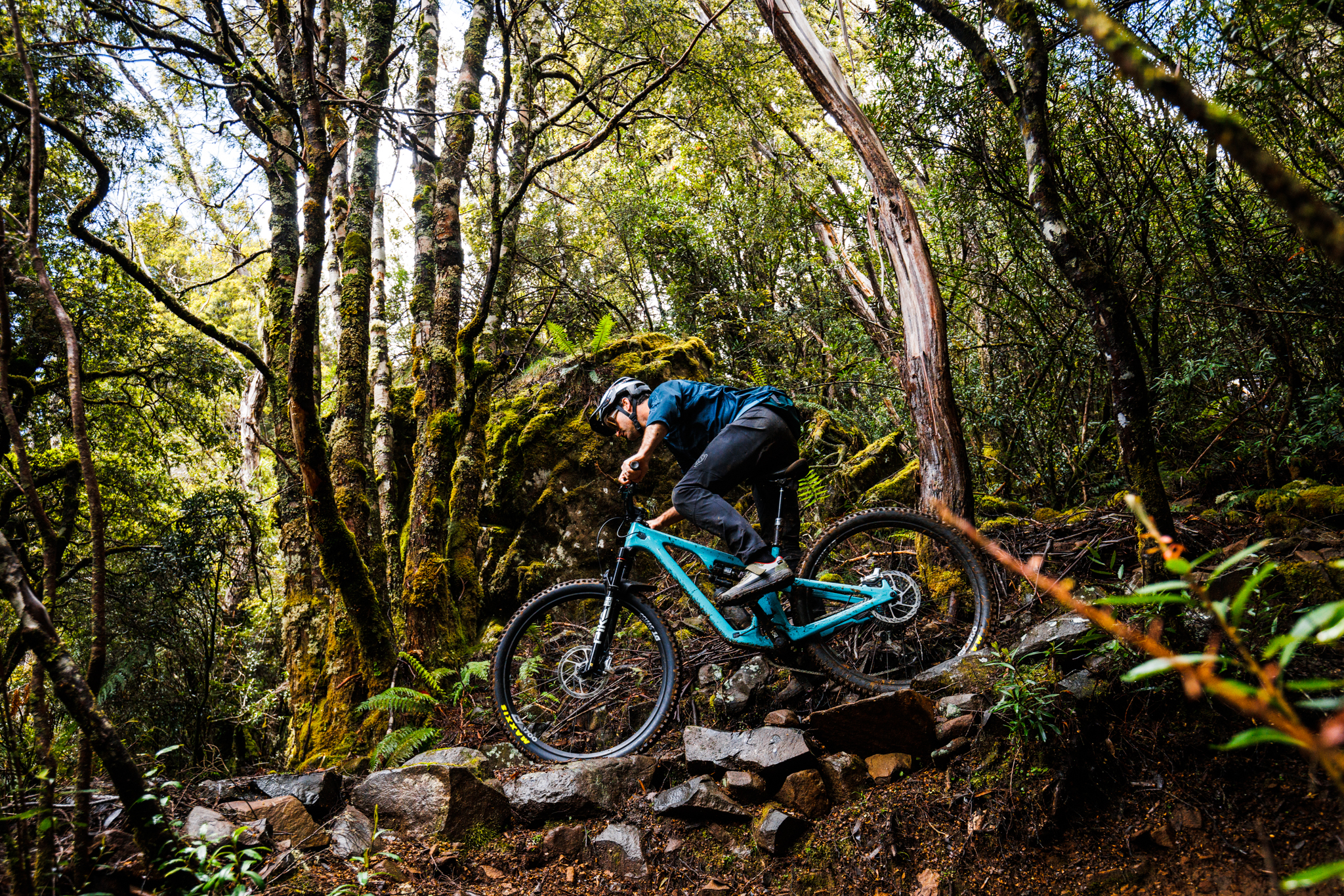
How exactly does it do this? Not only does the derailleur know what gear it’s in and what the size of each sprocket is, it knows how many shift gates each sprocket has and the average RPM that sprocket is likely to be turning at an average riding speed. It uses this information to determine how long it should take for the chain to hit a shift gate, and times each shift accordingly. If you told us a derailleur could do this ten years ago, we would have told you to stop watching Terminator 2!
Because of this in-built decision making, rapidly shifting gears in the workstand initially appears slow. On the trail however, it becomes apparent that the system does this deliberately in order to shift with better precision and reliability. The result is that it’s virtually impossible to mis-shift with the new SRAM transmission, resulting in less noise and disturbance to your pedalling rhythm.

It works even better on an e-MTB
In addition to testing a SRAM XX Eagle AXS T-Type transmission on a Yeti SB120, Mick also received an additional groupset to install on his Specialized Levo.
It’s worth noting here that SRAM isn’t producing any e-MTB specific components for its new transmission. Instead, all of these parts are designed to be used on any mountain bike, whether it’s equipped with a motor or not.
This is a notable change in tone compared to the launch of the original SRAM Eagle drivetrain, which wasn’t initially approved for e-MTB use. SRAM had to introduce a single-click shifter specifically for e-MTBs in order to prevent riders from over-shifting and risking damage to their chains and cassettes. Fast-forward a few years, and it would seem that the high-torque demands of an e-MTB have been factored into the design of the XX transmission from day one.
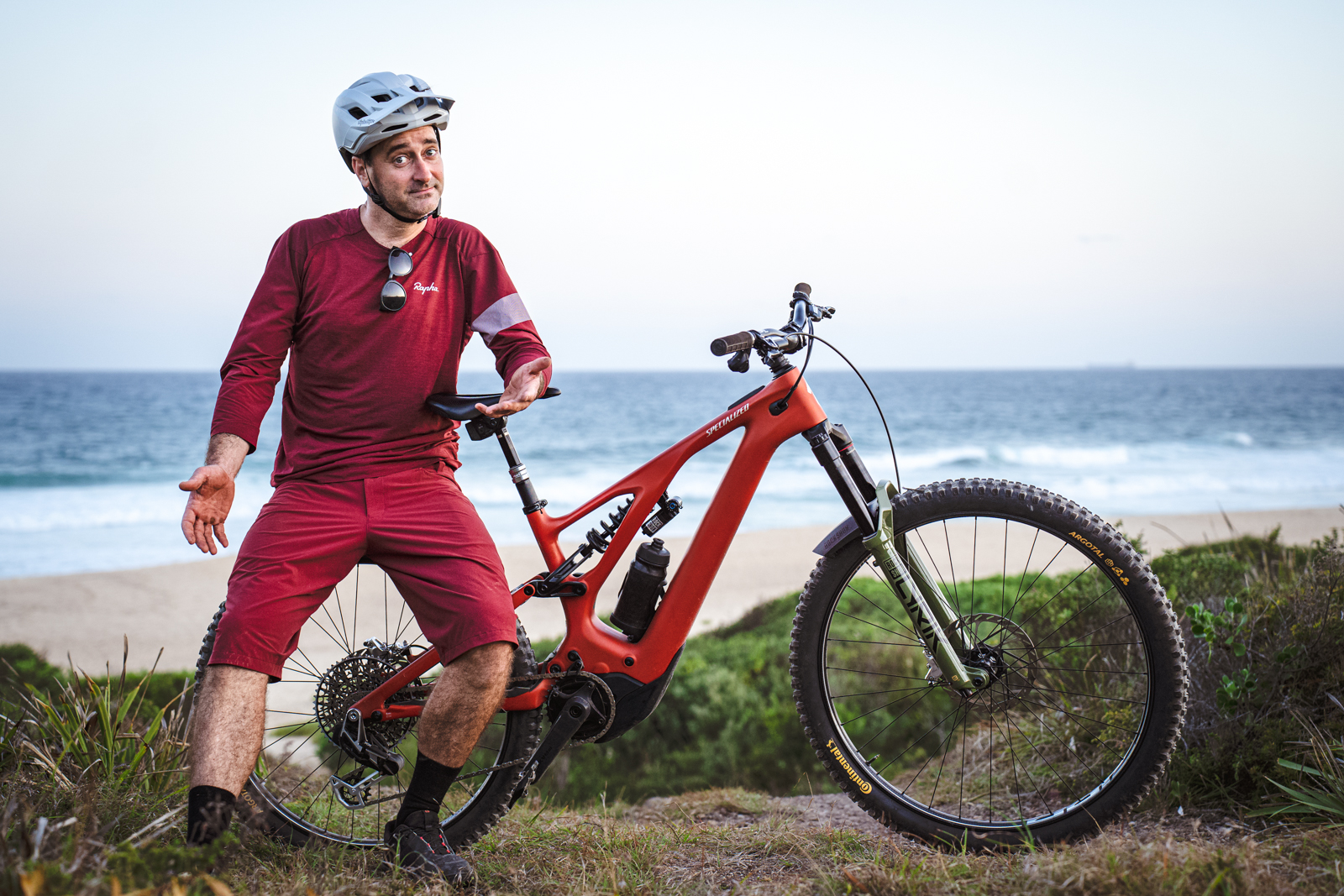
Within the first ride on the Levo, it was obvious that the new transmission is even better on an e-MTB. That’s because it’s really optimised to shift under load. Indeed the harder you push, the smoother the shift.
Even while out of the saddle, in full Turbo mode, with the rear brake on, the derailleur was able to fire off each shift with zero complaints. And because it pauses each time and waits for the chain to fully engage each sprocket during a series of multi-shifts, you never run the risk of the motor trying to deliver power to the chain when it’s not properly engaged. It really is awe-inspiring stuff.
You can literally stand on the derailleur
While the shift performance of the new SRAM XX Eagle AXS T-Type transmission is very good, it’s really the brute strength of the derailleur that has impressed us most.

Of course the biggest concern that everyone has expressed while we’ve been testing this groupset is the lack of a derailleur hanger. Since the dawn of time, the hanger has been made out to be a sacrificial lamb that’s designed to bend or break before damage occurs to the derailleur or frame. Without a hanger, surely you’re risking damage to the frame if the derailleur cops an impact?
To address this, SRAM already had part of the solution with its previous AXS derailleurs and the Overload clutch. Give the derailleur a kick from the side, and the Overload clutch engages to protect the tiny motor and gearbox. After absorbing the impact, the derailleur will then shift back into its last position.
Secondly, the UDH dropout allows the derailleur to rotate backwards in the event of a heavy frontal impact. It works well too – we’ve benefitted from the UDH design on several occasions in the past, and we’ve also made use of it with this new XX Eagle AXS transmission.
Finally, and perhaps most importantly, the derailleur’s direct mount design means that side forces are transferred into the axle rather than the frame.
After hearing from SRAM about how strong the new derailleur is, we decided to put those claims to the test by standing on the derailleur with the bike on the ground. Yes, really.
Try performing that trick with a traditional derailleur hanger!
Aside from the sickening sound of the Overload clutch giving way, the derailleur otherwise feels uncannily solid underfoot. This makes sense, since it’s more of a structural member rather than a delicate mechanism hanging off a small piece of alloy.
Having repeated this torturous show to many of our fellow riding companions over the past six months, we’re still yet to inflict any damage to either the derailleur or the frame. Try performing that trick with a traditional derailleur hanger!

Long-term durability
Long-term durability has been similarly impressive with the SRAM XX Eagle AXS T-Type transmission. Shift performance is the same as the day we got it, and aside from regular washing and lubing, we’ve not had to touch any of the components.
Battery charging is much the same as before. That is to say you’ll still need to remember to charge the little AXS battery on a regular basis in order to avoid being stuck in one gear partway through a ride. It is worth noting that the new derailleur does run the battery down quicker than the old AXS derailleur. This is due to the increased clutch tension, which means the motor consumes more energy when it’s shifting up the cassette.

As you’ll be able to see from all the scuffs and scars, the derailleur has copped an absolute hiding over the past six months. More recently, Mick spent a good portion of a photoshoot repeatedly smacking the derailleur on a rock on the inside of a tight right-hand corner. The derailleur’s Overload clutch would absorb the hit every time, then promptly return back to its previous position as if nothing had ever happened. If the hit was hard enough, the derailleur would also rotate backwards thanks to the UDH dropout. A quick push of the derailleur back down into position was all that was required to keep riding.
It’s quite unreal looking back on the photos and video clips now, given these would have been expensive, ride-ending events in the past.
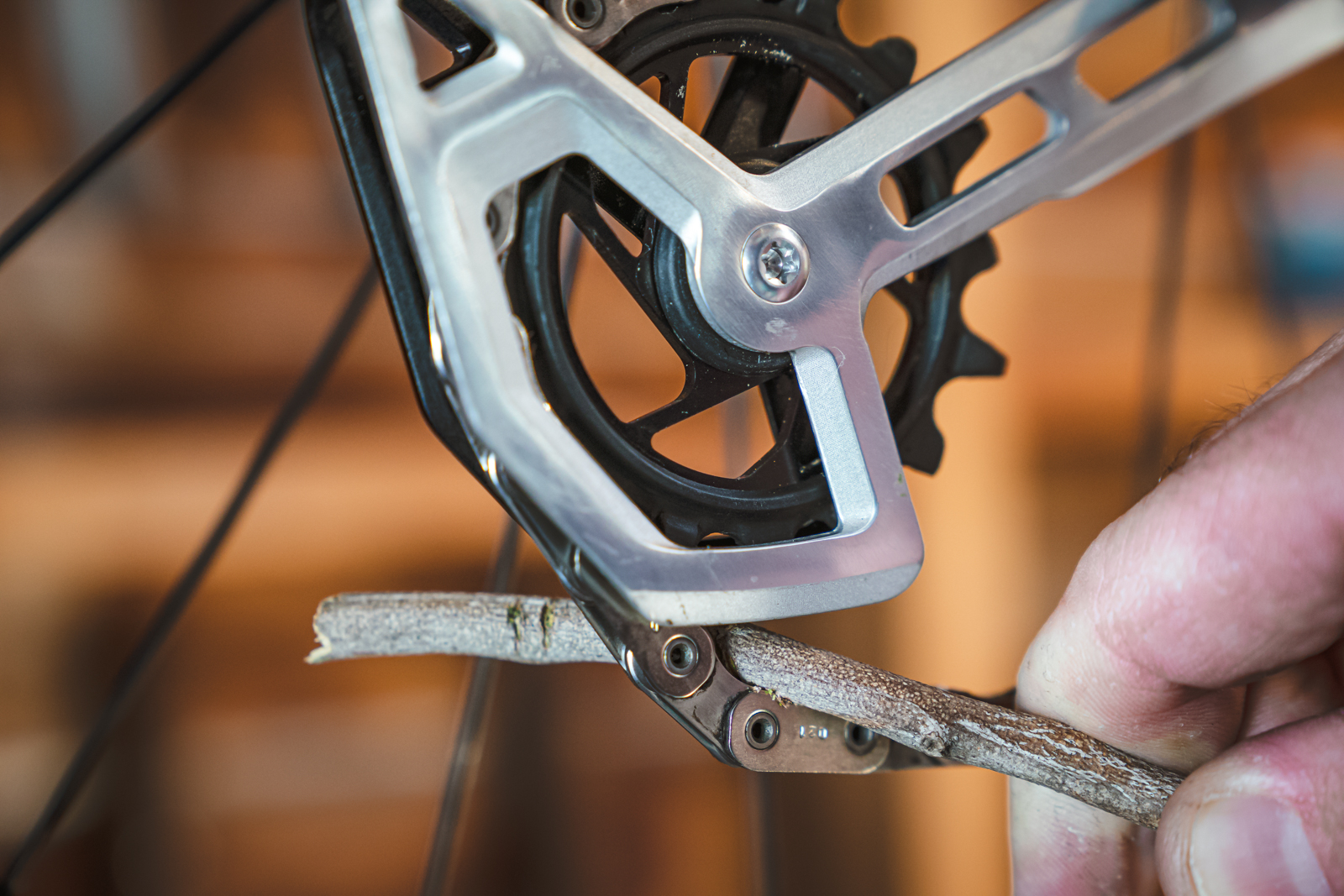
It’s worth noting that the majority of the impacts inflicted on our poor test derailleur were entirely deliberate on our behalf. The new direct mount design does offer a narrower stance than the old AXS derailleur, so if you’re not riding like a professional bike tester, it’s less likely to make contact with rocks and trees to begin with.
By removing those variables from the equation, and building a stronger anchor point for the derailleur, SRAM has radically reduced the potential points of failure.
There has also been careful attention paid to the design of the lower cage, which features heavily chamfered edges to avoid catching sticks and debris. If a stick does get lodged in the lower jockey wheel, the outer teeth are able to spin independently of the central spider to avoid jamming. SRAM calls this brilliant design the ‘Magic Wheel’, and it’s found on both the XX and XX SL derailleurs (not on XO).
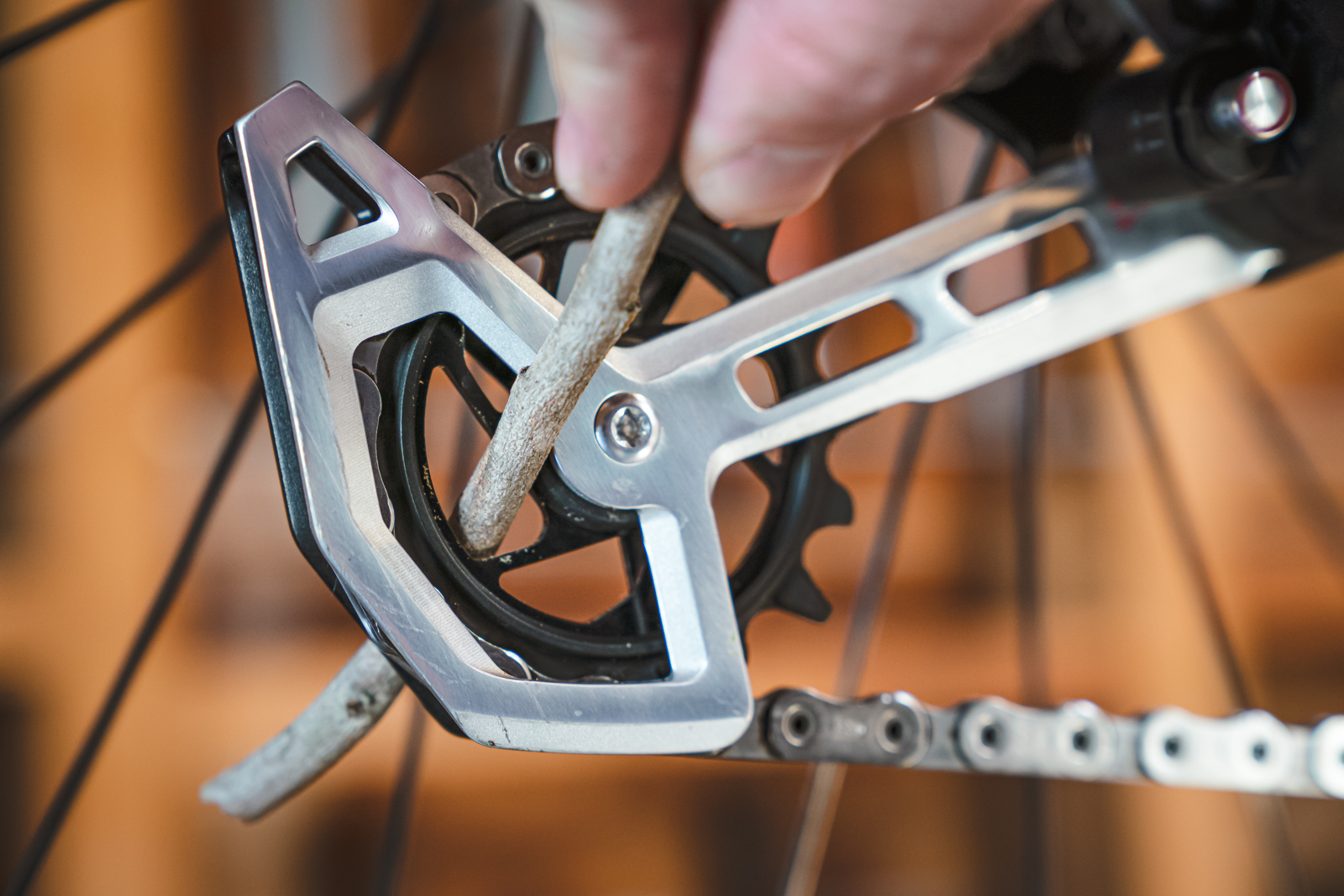
While we are still yet to toast a mech, this isn’t to say it’s invulnerable. With that in mind SRAM has designed the new direct mount derailleurs to be fully rebuildable and upgradeable. There are four main components that you’ll be able to purchase separately. Furthermore, the XX and X01 derailleurs utilise bolt-on scuff guards that can be replaced if you want to tidy things up.
We’ve also appreciated the clever split bashguard design for the new XX and X0 cranksets. We’ve cooked chainring teeth and chains in the past following brutal rock strikes, so it’s nice to have the additional protection from these alloy plates. They are removable if you’d prefer to leave the chainring naked though.
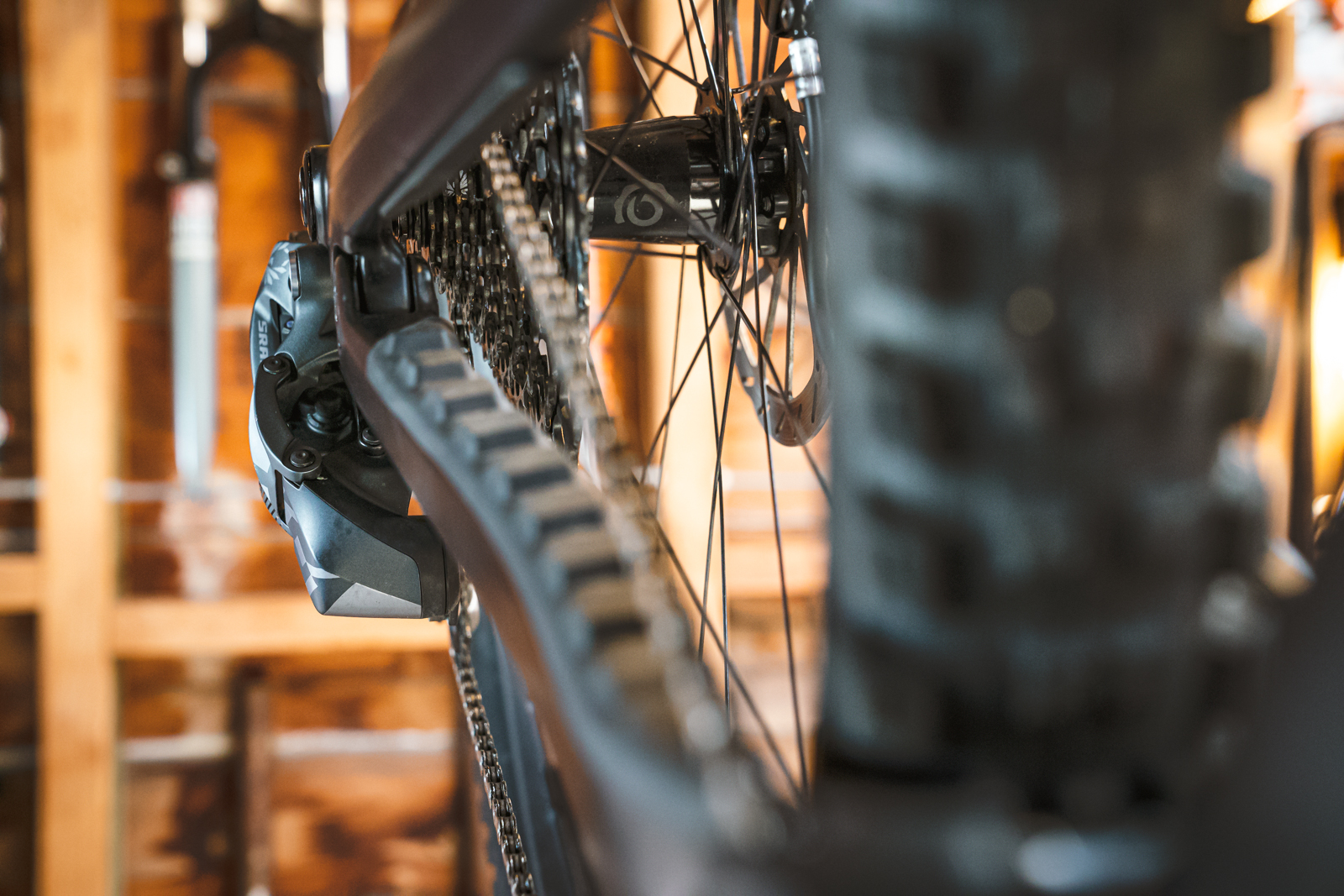
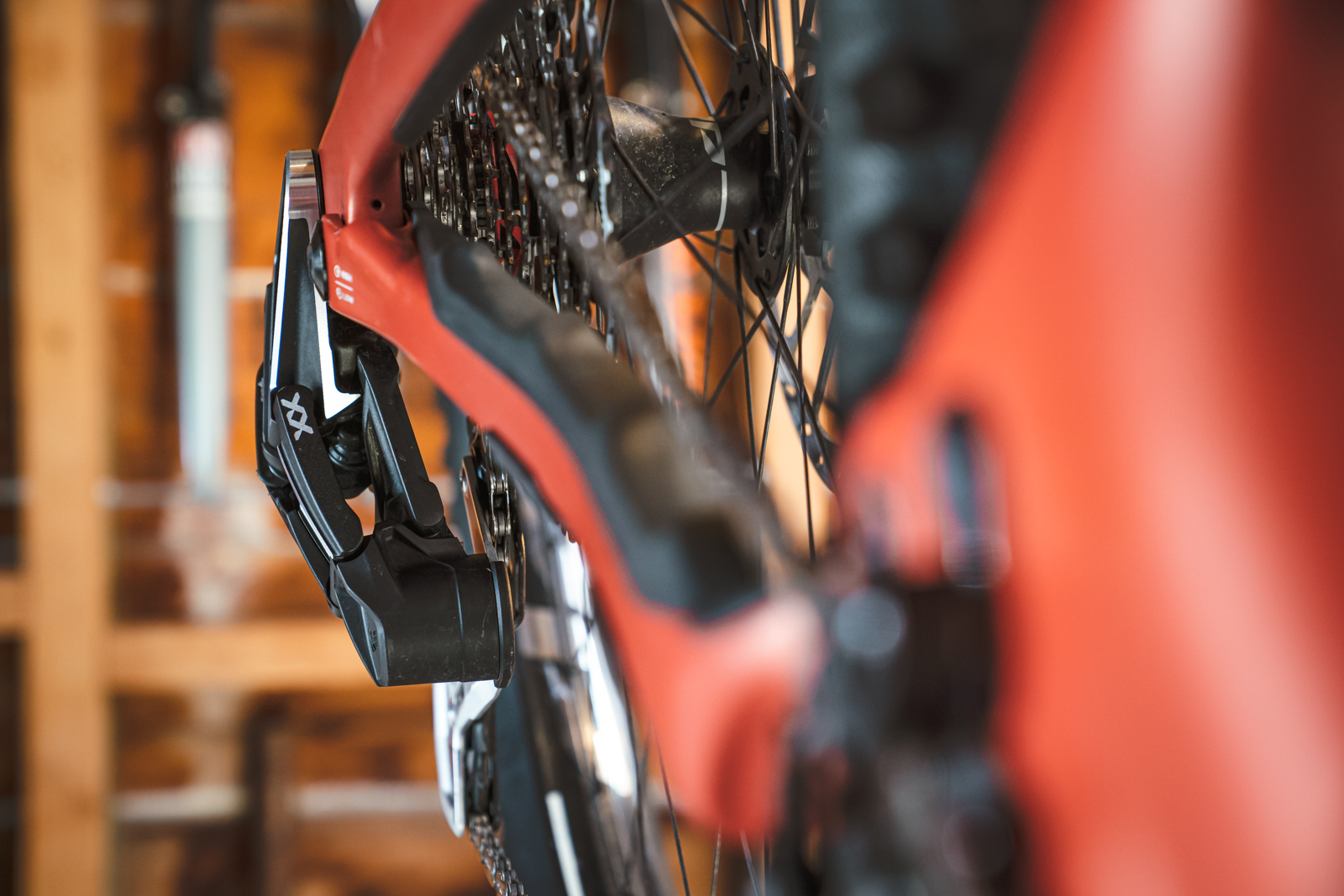
Engineered simplicity
A big part of our positive ongoing experience with the new SRAM XX Eagle AXS T-Type transmission boils down to the simplicity of the installation and adjustability (or lack thereof) of the new direct mount derailleur.
SRAM stated that the majority of failures it identified with previous drivetrains came down to improper setup. Either the derailleur hanger wasn’t aligned properly to begin with, or the limit screws and B-tension hadn’t been adjusted properly. That might not be as crucial with older 9-speed components, but a modern 12-speed drivetrain is far less forgiving of poor tolerances.
And while you might know how to adjust your derailleur perfectly, there are a lot of people out there who don’t. By removing those variables from the equation, and building a stronger anchor point for the derailleur, SRAM has radically reduced the potential points of failure.

It is worth noting that the new transmission isn’t totally without adjustment. As with the old AXS drivetrains, it is possible to fine tune the position of the derailleur using the Micro Adjust function. You can also change the functions of the controller pods using the SRAM AXS app, which is where you’ll also perform over-the-air firmware updates.
The new controllers are way more adjustable
Speaking of the controller pods, those too are completely new with the SRAM XX Eagle AXS T-Type transmission.
These have quite a different form factor compared to old AXS controllers, though funnily enough, they’re actually more inline with what we expected a wireless electronic shifter to look like to begin with.
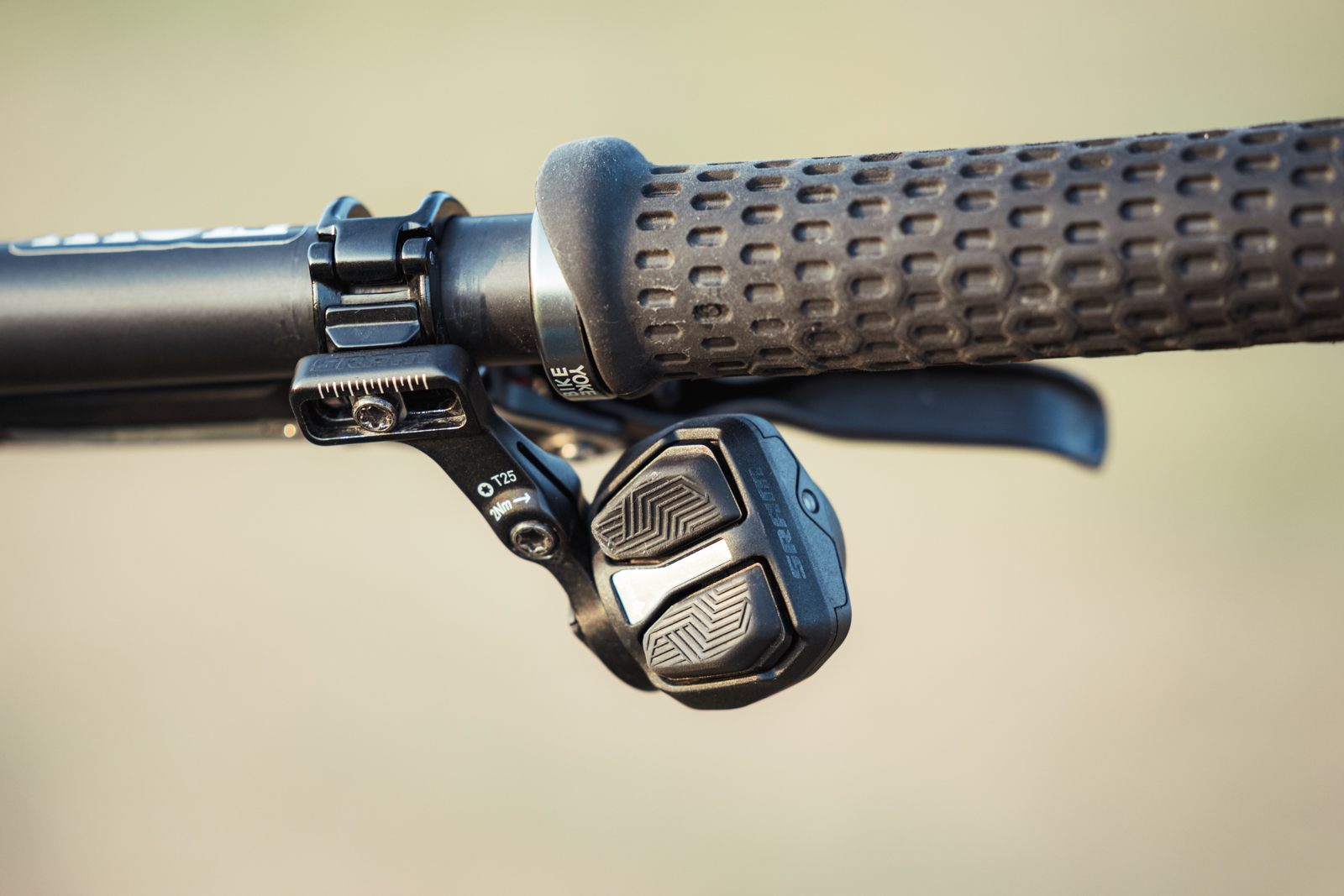
Each pod features two buttons that offer a significantly more positive and tactile feel than their predecessors. The rubber pads are available in both flat and concave profiles, so you can mix ‘n’ match the interface depending on your preference.
There are two mounting options available; a standard bar clamp and the MMX mount that bolts directly to a SRAM brake lever. In addition to lateral and angular adjustment via the mounts, each pod can be rotated within the clamp so you can tweak the approach angle for your thumbs.
This presents vastly more adjustment than the old AXS controllers. We’ve also had none of the grip interference issues that the previous paddles could often present.
Part of this is because the pods are simply more compact. SRAM explained that it’s gotten a lot better at building electronic boards, which has allowed them to make the whole unit smaller.
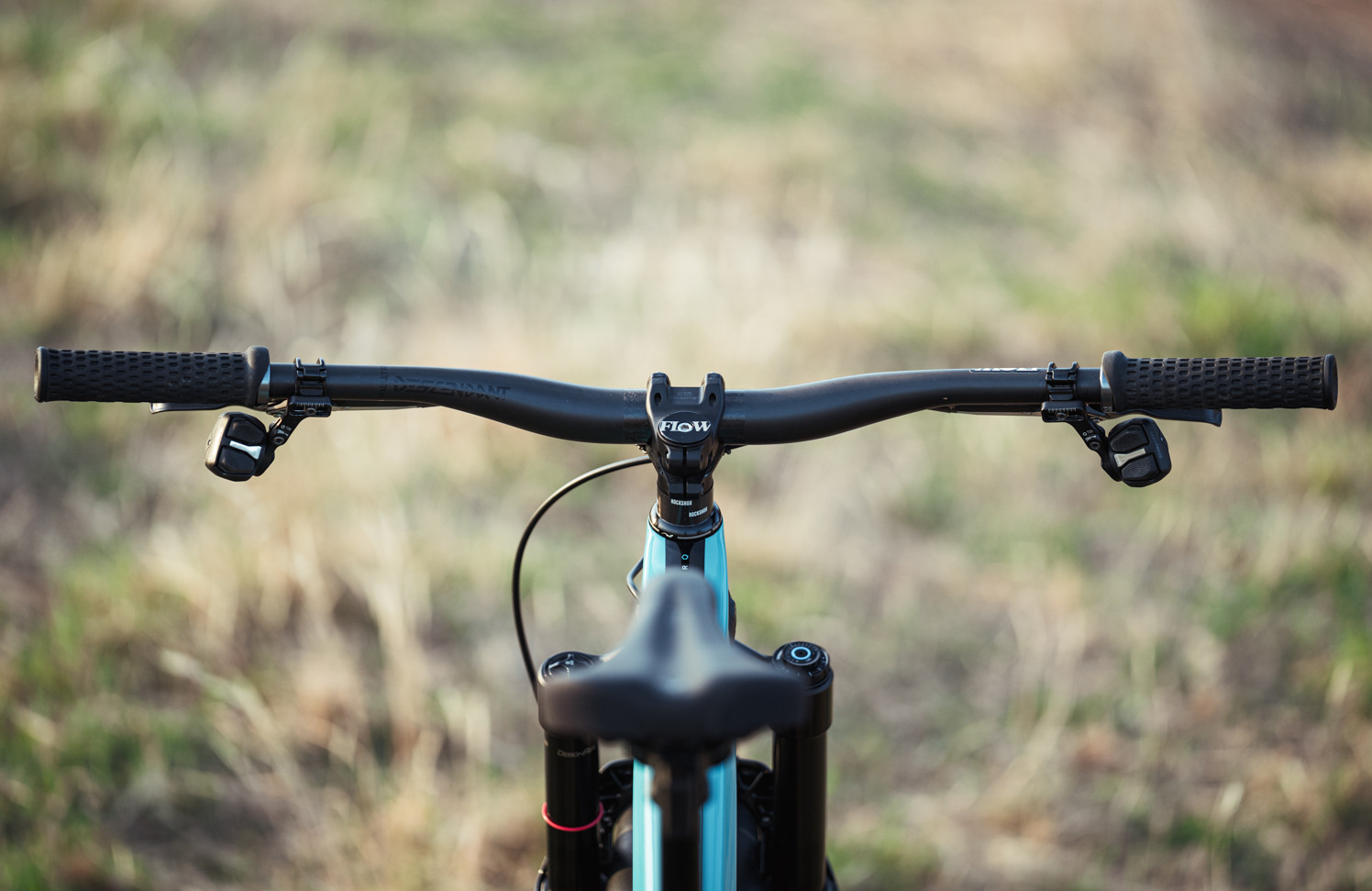
While we love the improved adjustability and tactile feel, the new buttons aren’t quite as effortless to use as the old AXS controller. Then again, some riders have found the old design to be too vague, so your experience may vary.
It’s also worth pointing out that the left and right pods are actually the same unit, just flipped 180°. Obviously, this is easier and cheaper for SRAM to manufacture, but it means that our left thumb is presented with two buttons to activate the Reverb AXS dropper post. This occasionally caused some hesitation during particularly hectic sections on the trail. As such, we’d love to see a single button specific pod.
The good news is that thanks to the standardised AXS communication protocol, all AXS components will talk to each other. That means you could pair the old AXS controllers with the new transmission if you didn’t want to use the pods.
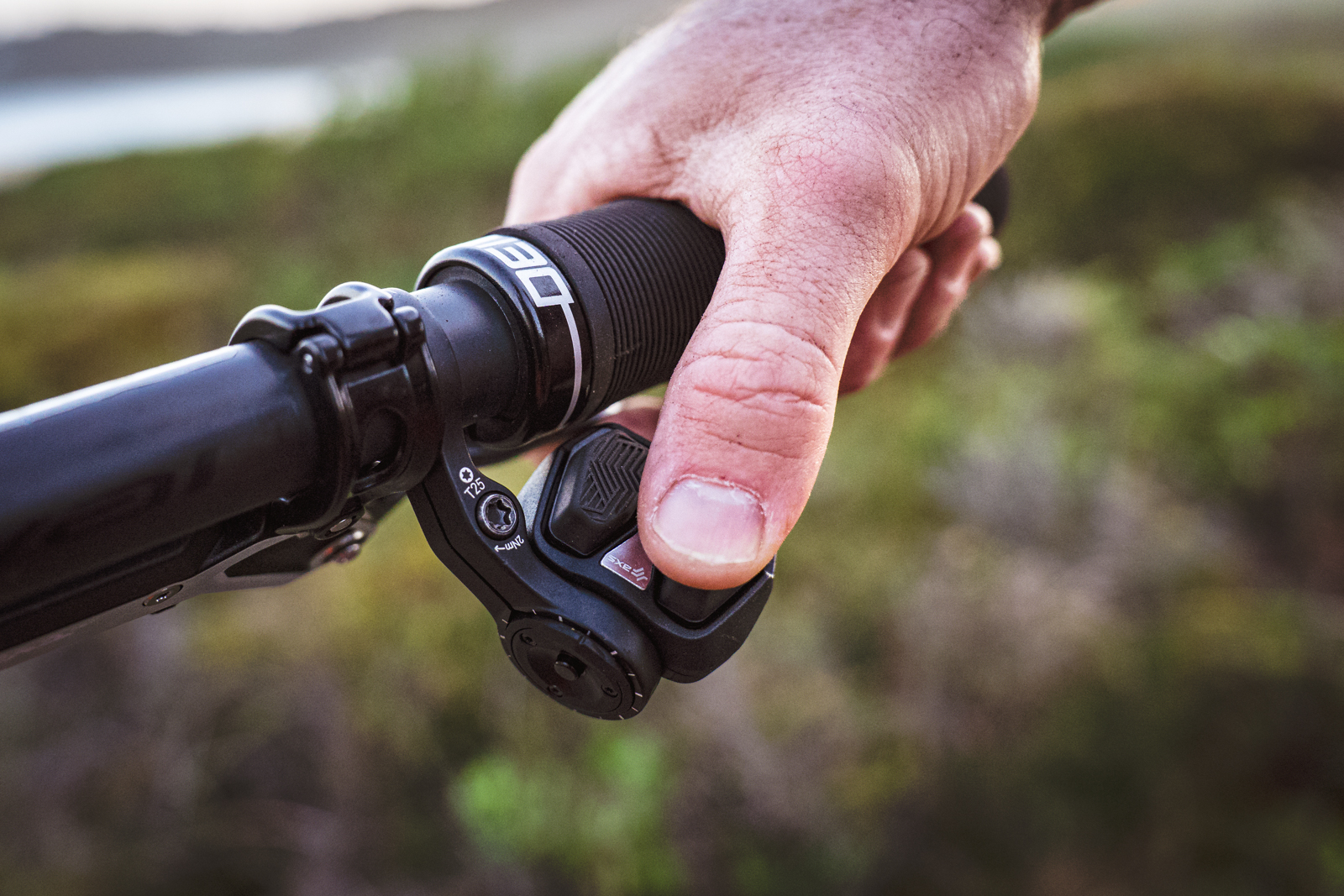
The 55mm chainline is taking over
As mentioned earlier, the new SRAM XX Eagle AXS T-Type transmission is purpose-built around the 55mm chainline. This sees the chainring pushed 3mm further outboard than a traditional Boost drivetrain (52mm). It doesn’t sound like much, but the extra 3mm is crucial in allowing frame designers to achieve more tyre clearance while employing a thicker and potentially stronger chainstay.
Over the past two years, both SRAM and Shimano have introduced specific cranksets with a 55mm chainline that are designed to work with a conventional Boost 148x12mm rear hub. The problem we’ve encountered is that because the cassette isn’t spaced out any wider, the chain ends up on a pretty severe angle when you’re in the largest sprockets. This leads to more friction and noise, as well as a greater chance of derailment when back-pedalling.
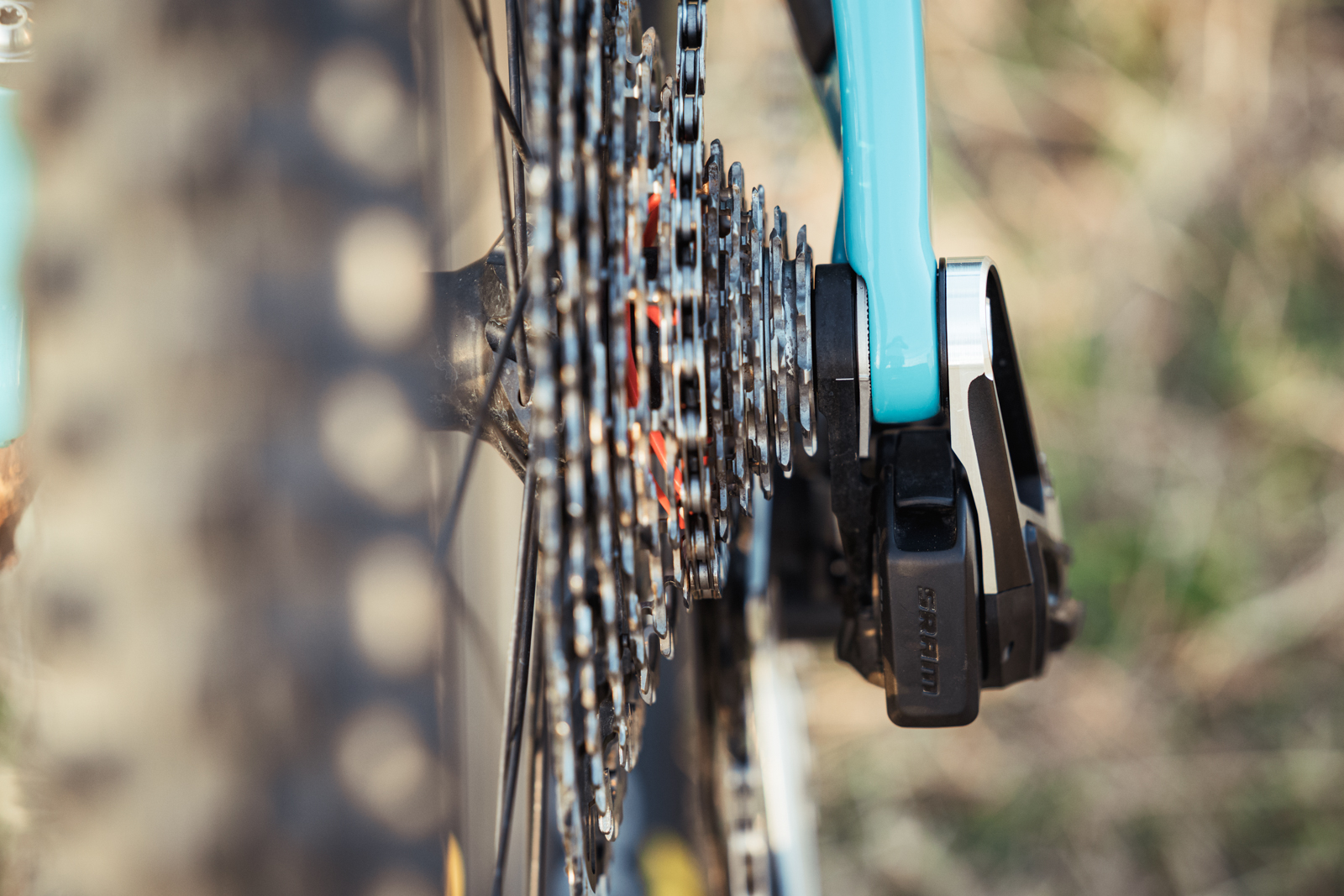
With the new SRAM XX Eagle AXS transmission however, the cassette has been spaced out wider. According to SRAM, the cassette sits 2.5mm further outboard, which has been made possible due to the tightened tolerances between the cassette, dropout and derailleur. This results in an improved chainline while still utilising a conventional Boost 148x12mm rear hub.
Furthermore, if you look at the derailleur from the back, you’ll notice that the cage looks like it’s bent. This is actually a specific profile that allows it to articulate throughout the gear range, so that the lower jockey wheel is always pointing towards the chainring. This delivers a straighter and smoother path for the chain, again resulting in less friction and noise.

The downside of a crankset being built around a 55mm chainline is a wider Q-factor. For most of the new XX SL, XX and X0 cranks, the 174mm Q-factor remains the same as the previous generation cranks that featured a 55mm chainline. However, the new XX SL crankset will be available in a 168mm Q-factor to suit XC and marathon racers who prefer a narrower stance.
With all of that in mind, this optimised 55mm chainline of the new SRAM XX Eagle AXS transmission might just be the nail in the coffin for the Super Boost standard. Given that Super Boost only offers a marginally wider chainline (56mm), but requires a specific 157x12mm rear hub to go with it, its advantages are becoming less pronounced.
It has gotten heavier
Now we’re not talking about the entire SRAM XX Eagle AXS T-Type transmission here. The cranks, chain and cassette weigh much the same as the previous iteration, and indeed the new pods are actually a smidge lighter than the old AXS controllers.
If you were expecting the new direct mount derailleur to be lighter however, you would be wrong.
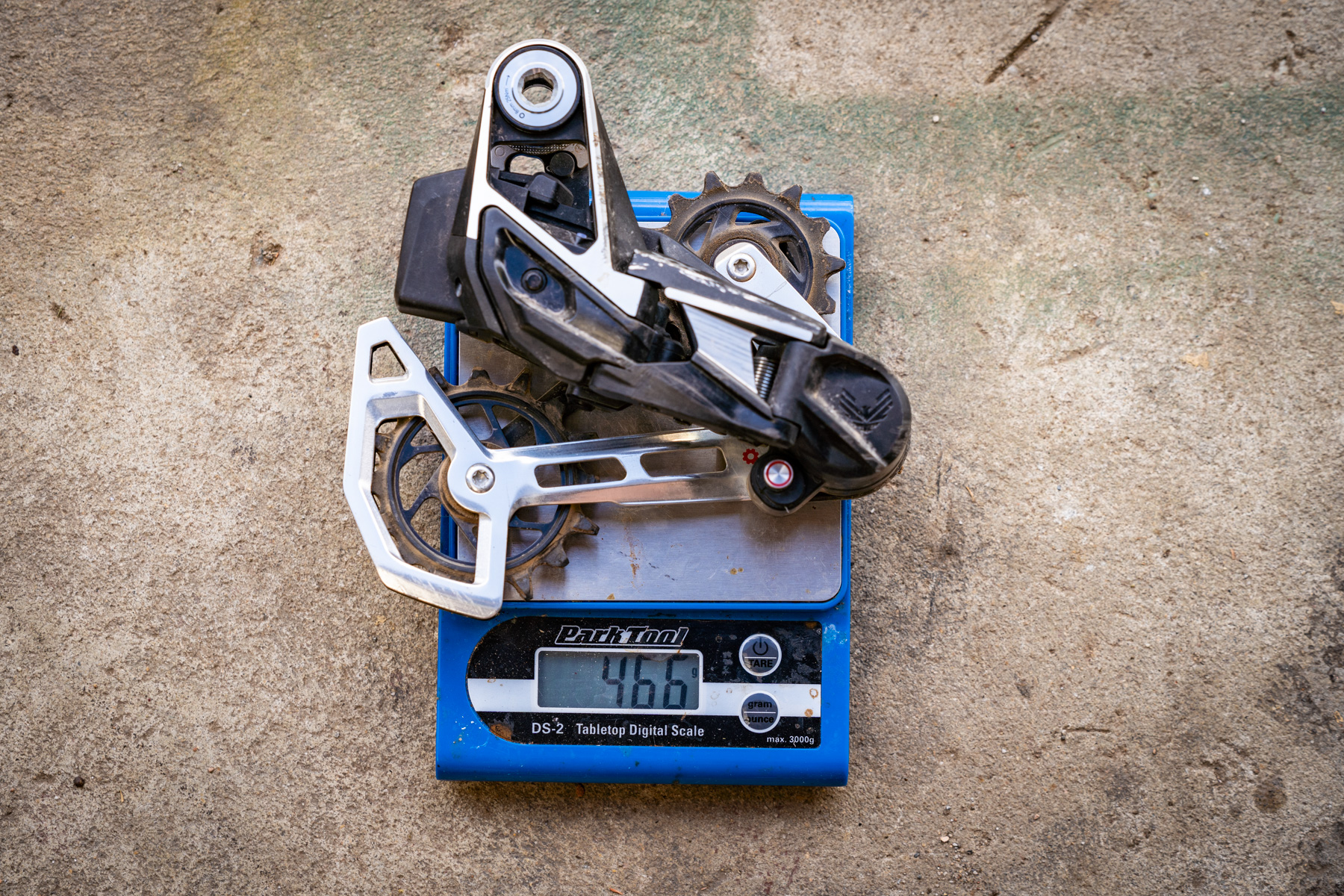
A new XX Eagle AXS derailleur weighs 466g. Compare that to the 400g combined weight of the old XX1 Eagle AXS derailleur (373g) and a UDH (27g). Sure this isn’t a big increase in weight, but it’s still an important one to point out.
That’s because over the last two decades, we’ve gotten accustomed to new bikes and components always being lighter than the old models. Sometimes by a lot, and sometimes by not much at all. But very rarely would a new product be heavier.
That’s been changing lately though. Indeed we’ve witnessed an emerging movement that has seen modern mountain bikes getting notably heavier than those we were all riding back in 2013.
It’s for that reason why we’ve seen tubeless inserts become a thing. It’s why you’ll find more tyres with heavy duty casings and sticky rubber compounds, and forks with bigger upper tubes. Add in the popularisation of coil shocks and carbon rims with lifetime warranties, and it’s not hard to see why trail and enduro bikes are getting heavier.

Another good example is the HS2 brake rotors that SRAM brought out last year. These are thicker and heavier than the previous Centerline rotors, but they’re also tougher, more fade resistant and provide increased power. All good things when it comes to one of the most important components on your mountain bike.
Of course all of these improvements bring about more weight, and that’s also the case with the new SRAM XX Eagle AXS derailleur. Yes it’s heavier, but holy shit is it way tougher than anything else before it.
Are we advocating for increasing the unsprung weight that’s hanging off the rear wheel on your mountain bike? Not necessarily, though you could argue that SRAM’s new Eagle AXS transmission does open the door a little wider for gearbox advocates.
However, given the performance and durability leap that the direct mount derailleur has taken, we can certainly acknowledge that there are advantages to be had when you’re not hellbent on shaving grams at the expense of all else.
So was the UDH a Trojan Horse?
Well, yes. But there’s a bit more to it than that.
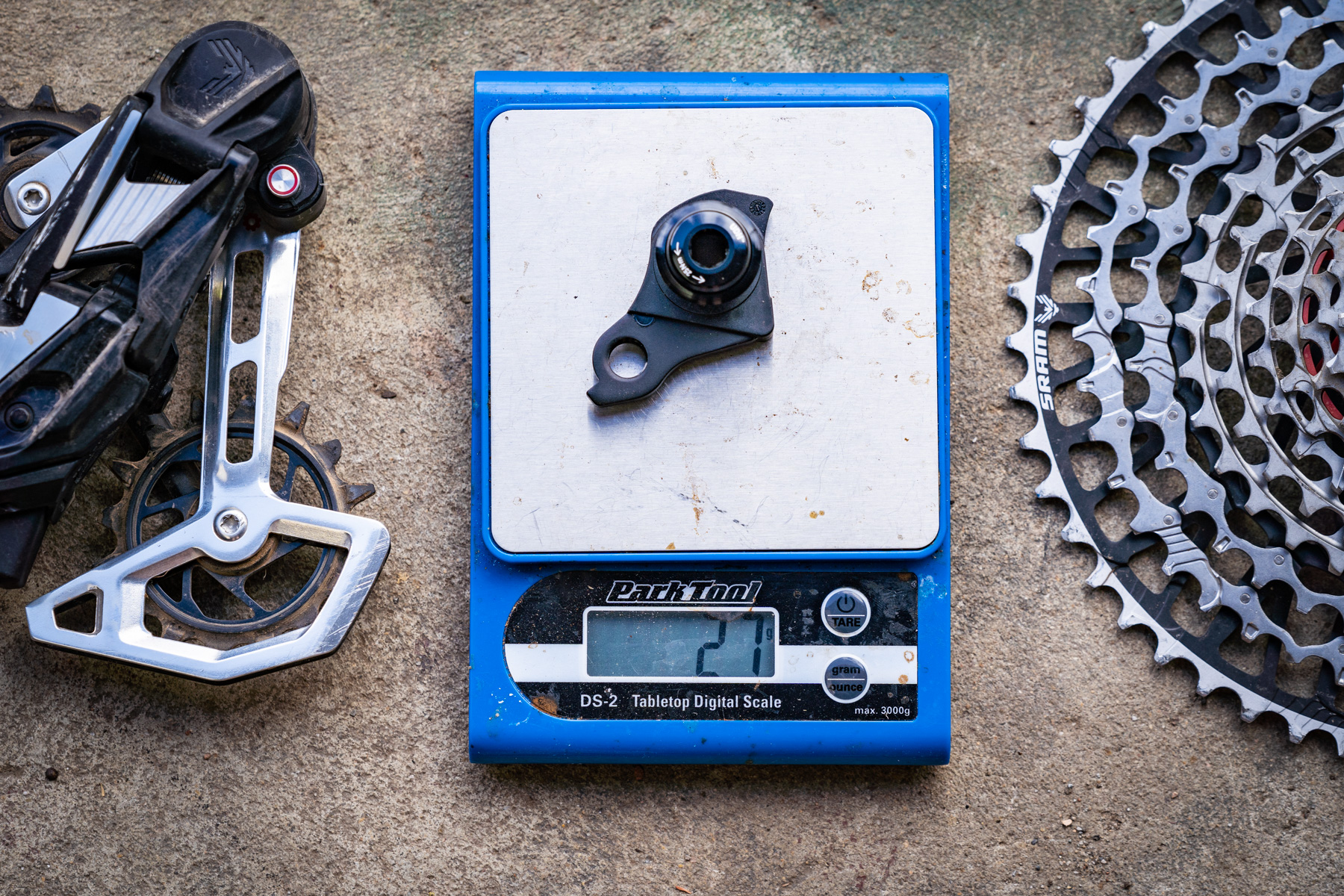
SRAM explained that it began the development of the new XX Eagle AXS T-Type transmission pretty much as soon as it introduced the original AXS groupset back in 2019. In that same year, the 2020 Trek Fuel EX came out and debuted a special new derailleur hanger called UDH.
The SRAM-developed UDH was immediately appealing as it set out to create a universal derailleur hanger to replace the bazillion different standards that existed already. Additionally, the UDH featured a clever design that allowed the derailleur and hanger to rotate backwards in the event of a front-on impact. It works really well, and it’s certainly saved us a few derailleurs over the last few years.
Fast-forward to today, and with a few exceptions, almost every mountain bike brand has adopted the UDH design. This of course has paved the way for SRAM to introduce its new direct mount derailleur, with a very broad range of compatibility for maximum market take-up.
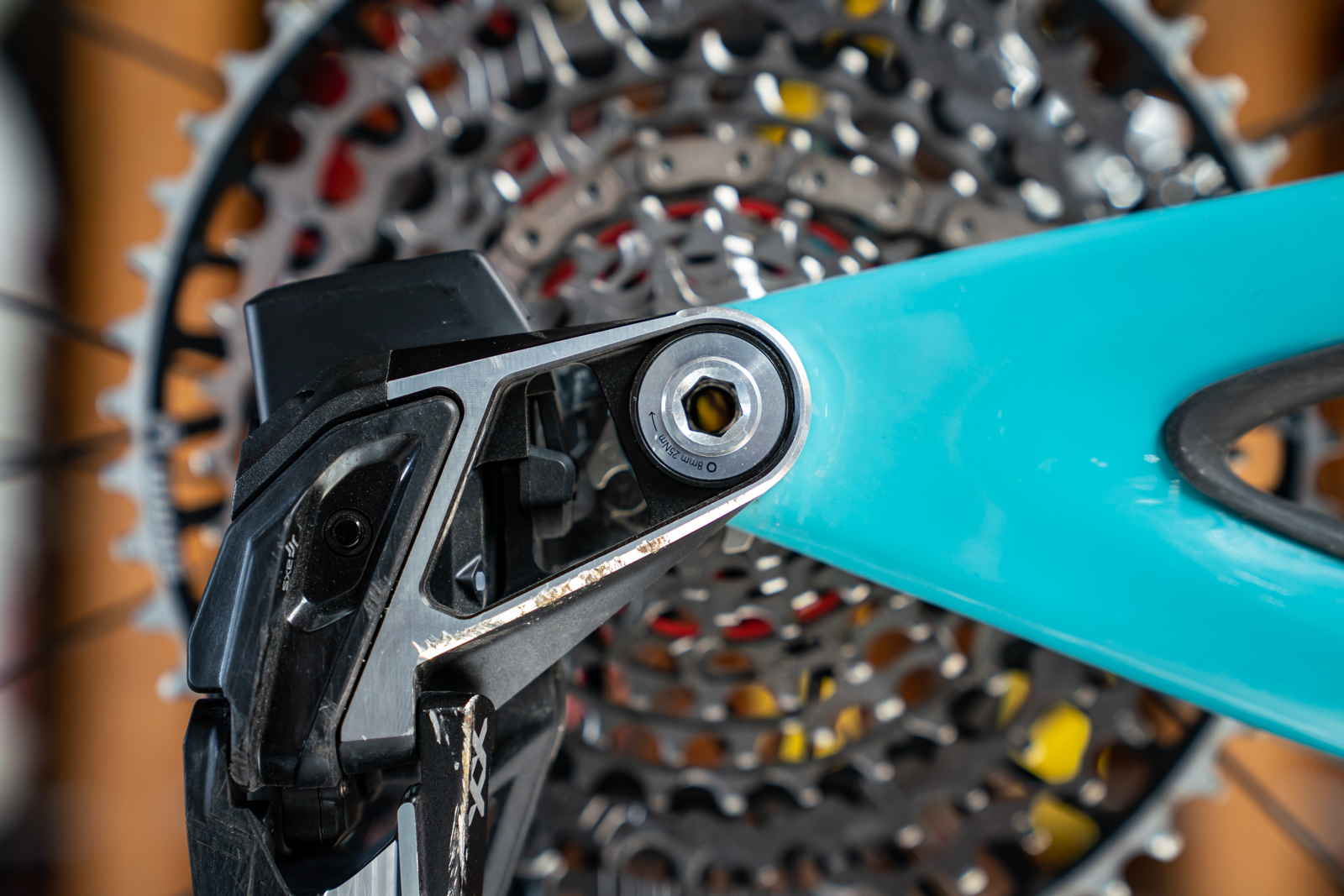
Are we mad at SRAM for delivering UDH as a decoy while it was developing its new transmission? Not at all. We’re actually impressed that it was able to implement phase one of its direct mount derailleur concept four whole years ago, and to have done it in such a convincing manner that saw it grow to become the dominant industry standard. Indeed it just goes to show how big of an influence the American component maker has exerted when it comes to modern mountain bike design.
Alright, what are the downsides then?
In terms of function and durability, we’re yet to encounter any significant downsides of the new SRAM XX Eagle AXS T-Type transmission.
Some may lament the lack of backwards compatibility and the fact that you can’t mix ‘n’ match components with other brands. We expect smaller companies will begin offering aftermarket T-Type compatible chainrings in the near future, and perhaps we’ll even see alternative chains and cassettes at some point too. In the meantime however, you are locked into the SRAM ecosystem when it comes to spares.
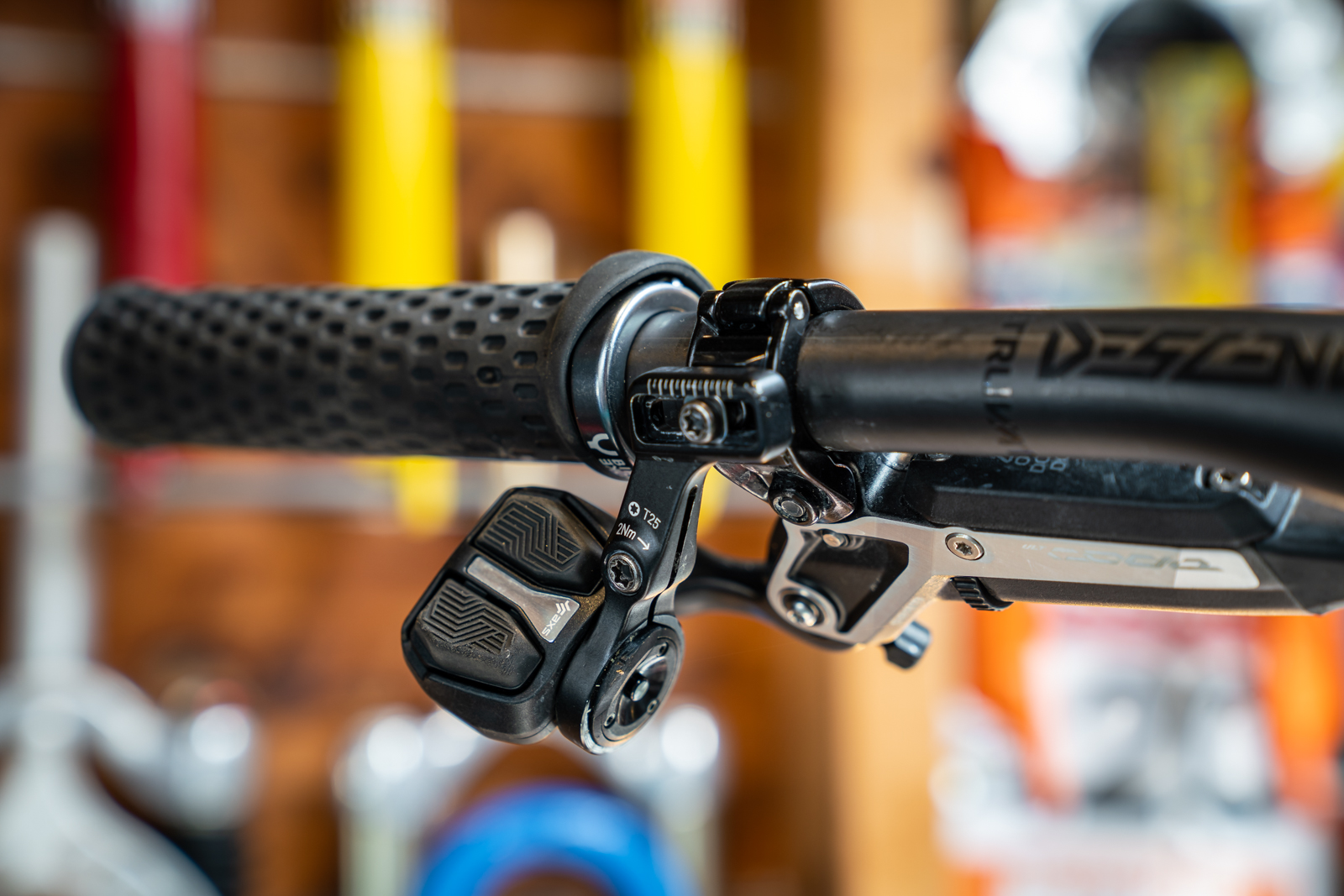
If we were being picky, we’d like to see a single-button pod for the left hand side. Then again, we’d probably just stick with the old Reverb AXS controller anyway.
The usual complaints with electronic components carry over. You have to remember to charge the AXS battery, and you’ll need to take the special charger with you if you’re heading away on a riding trip. This may bother some more than others, but we think it’s totally worth it for the clean cable-free design.
As mentioned before, the new derailleur does see a little more weight hanging off the rear wheel. It’s unlikely to be noticeable, but along with heavier HS2 brake rotors and 4-piston callipers, it is part of a broader trend that has led to an increase in the unsprung mass on modern trail bikes. No doubt the gearbox evangelists out there will be fuming that all of the R&D that SRAM has poured into this new transmission wasn’t directed towards advancing gearbox technology.

Performance aside, the bulky derailleur aesthetic won’t be to all tastes. We’ve since grown to appreciate the industrial machined finish, which has a definite whiff of XTR M970 about it.
Really though, the main downside of the new XX Eagle AXS transmission is cost. The current retail price on a full groupset is $3,522 AUD, which is not an inconsiderable amount of dough.
There are some notable standouts in the price list, including the derailleur ($1,117 AUD), the cassette ($945 AUD), and the chain ($215 AUD). Interestingly, the derailleur is slightly cheaper than the previous XX1 AXS version. The chain and cassette however, are significantly more expensive.
SRAM XX SL Eagle AXS
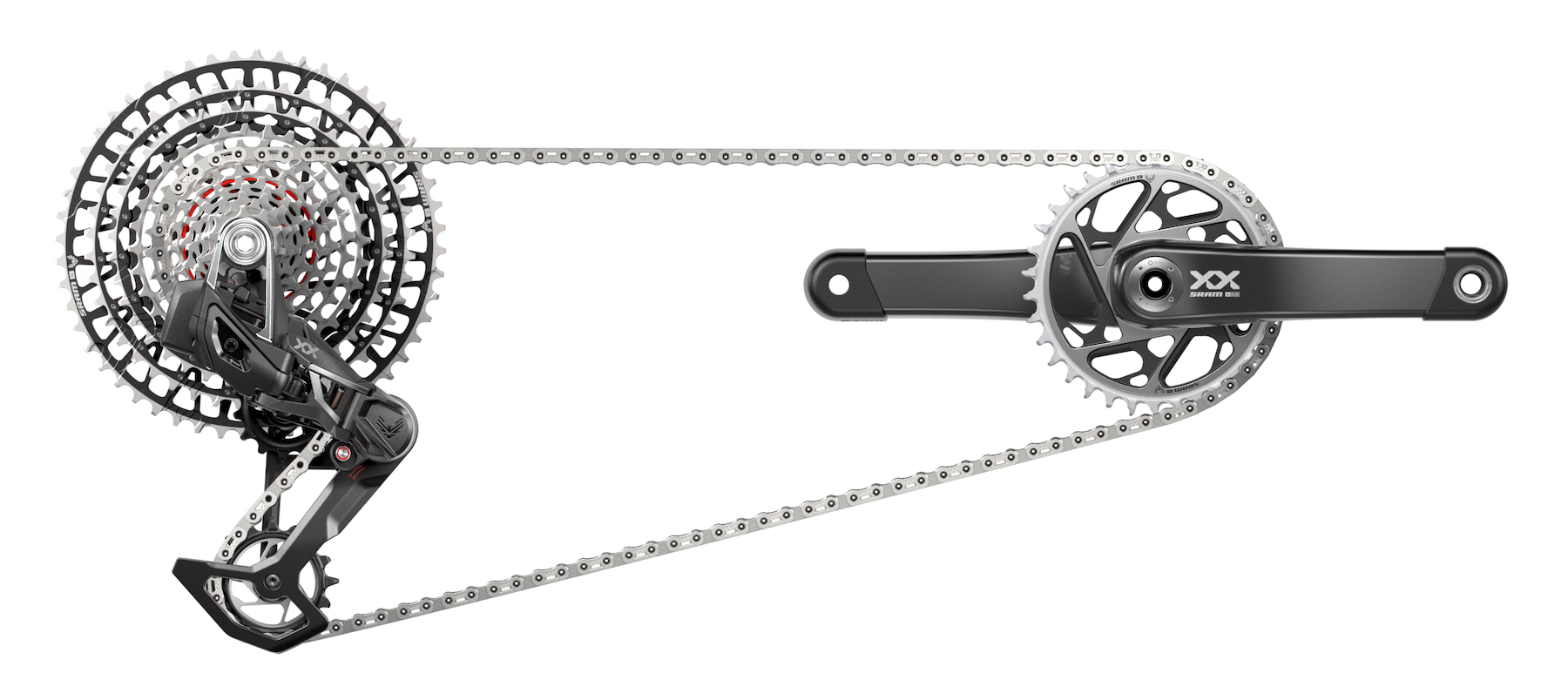
Believe it or not, the SRAM XX SL Eagle AXS T-Type transmission will cost even more. Sitting above the XX groupset that we’ve been testing, the XX SL version is functionally much the same, albeit a bit lighter.
It also features carbon cranks, but the arms are hollow to reduce weight. The XX SL crankset can also be had in a narrower 168mm Q-factor, and there’s a spider-based power meter option too.
The XX SL cassette is claimed to be the lightest 10-52T cassette that SRAM has ever produced at 345g. The top three cogs are made from alloy, while the remainder is machined from a single block of steel. The price on one of those is $1,031 AUD. Wowsers!
Weight has also been saved on the chain thanks to cut-outs through the outer plates, and the XX SL derailleur is claimed to be 25g lighter due to a carbon cage and the lack of any skid plates.
The result of the SRAM XX SL Eagle AXS transmission using more exotic materials and a weight-optimised design is a groupset price of $3,780 AUD. That jumps to $4,639 AUD if you go for the power meter crankset.
SRAM X0 Eagle AXS
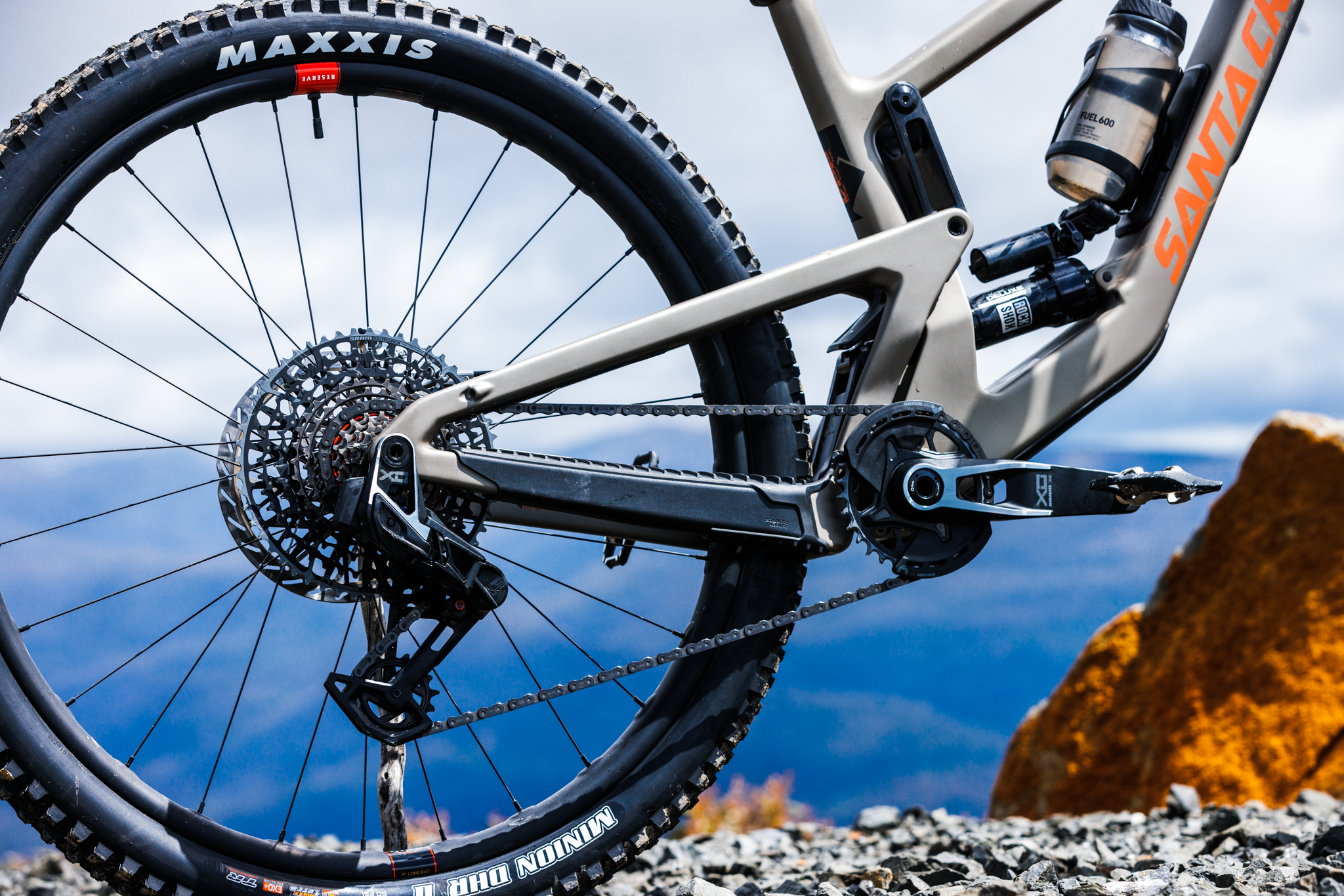
Currently, the cheapest option is the SRAM X0 Eagle AXS T-Type transmission, which sits below the XX groupset we’ve been testing.
Again, the overall functionality is claimed to be very similar. The primary difference is the crankset, which uses machined alloy arms with a hefty relief through the middle. While these are claimed to be one of the lightest alloy cranksets on the market, they add some weight over the carbon cranks found on the XX and XX SL groupsets.
There are some differences in the finish with the chain and cassette, with the latter coming in significantly cheaper than the XX version at $688 AUD. The X0 derailleur is mostly the same as the XX model, though it does miss out on the clever Magic Wheel design.
Because of those changes, the SRAM X0 Eagle AXS transmission comes in at a groupset price of $2,748 AUD. That’s still a lot of money for a drivetrain.

What about a SRAM GX Eagle AXS T-Type transmission?
Given SRAM’s history of trickling its Eagle and AXS technology down to cheaper price points, it seems highly likely that we’ll be seeing a SRAM GX Eagle AXS T-Type transmission in the future.
There’s no reason why the same technology couldn’t be offered at a GX level, and it would certainly be welcome given the high price of the XX SL, XX and X0 groupsets. For example, a current GX 10-52T cassette sells for $345 AUD thanks to its cheaper Full Pin construction. That’s literally half the price of the new X0 cassette.
While we’re confident about a GX Eagle AXS transmission arriving at some point down the line, we’re curious as to how far SRAM will go. Will we see a NX or even SX version? Would those also be wireless? And if not, would it even be possible to build a cable-activated direct mount derailleur?
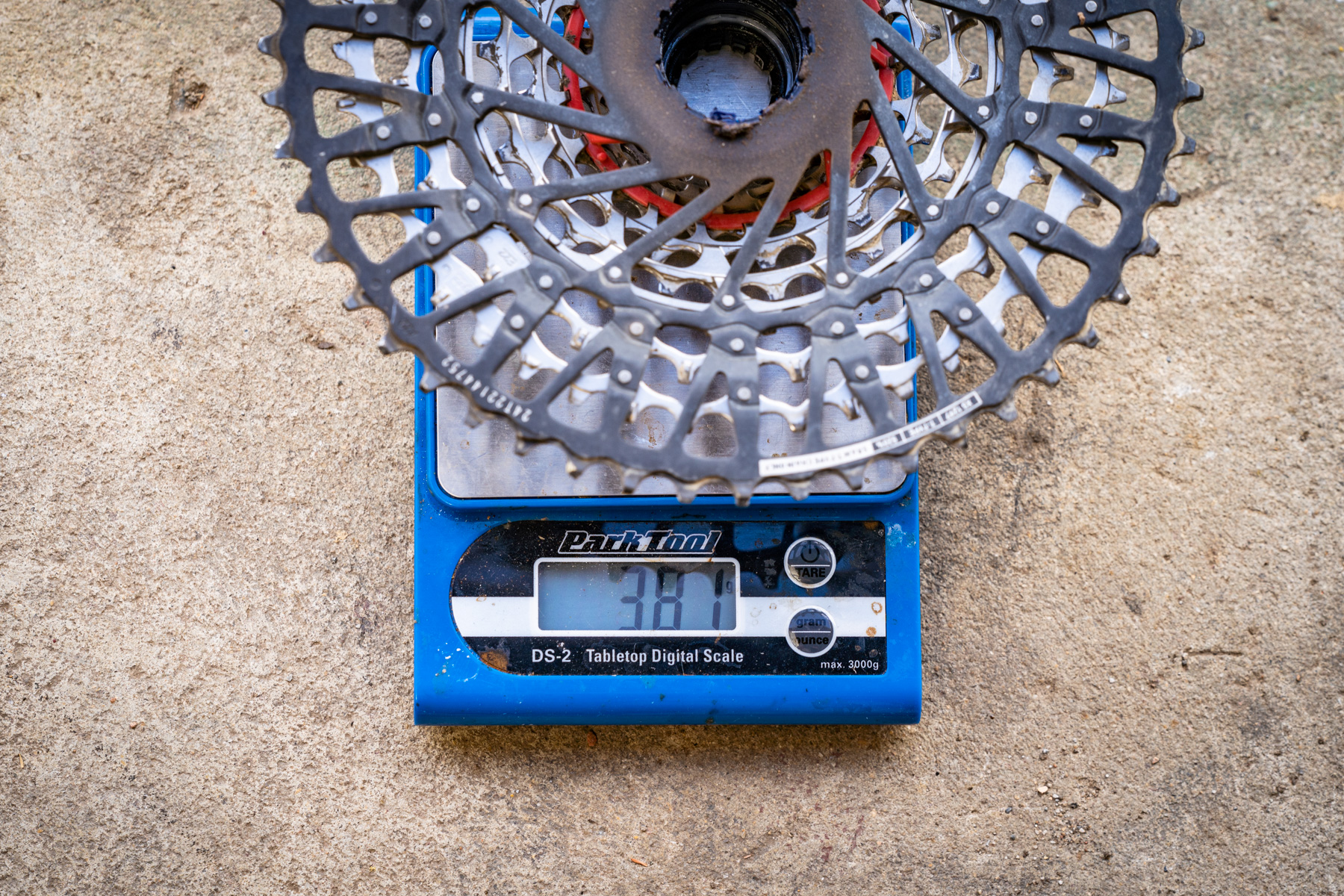
Looking towards SRAM’s road groupsets, it would seem that development of mechanical drivetrains has slowed right down in favour of a broader move to wireless electronic shifting. We expect the mountain bike groupsets will go in a similar direction, so perhaps mechanical shifting is set to be relegated to the budget end of the market.
What about road and gravel?
It’s less likely we’ll see the new transmission design adopted by SRAM’s road and gravel groupsets in the near future. That’s because the UDH standard is quite rare in the drop bar world, and a UDH dropout is key to the implementation of the direct mount derailleur. There’d need to be a significantly broader market take-up in order for SRAM to justify mass-producing groupsets.
That’s not to say that SRAM won’t bring the design over to road and gravel in the future. Certainly there are improvements to be had in shift performance and durability, particularly for gravel riders frequenting more adventurous terrain.
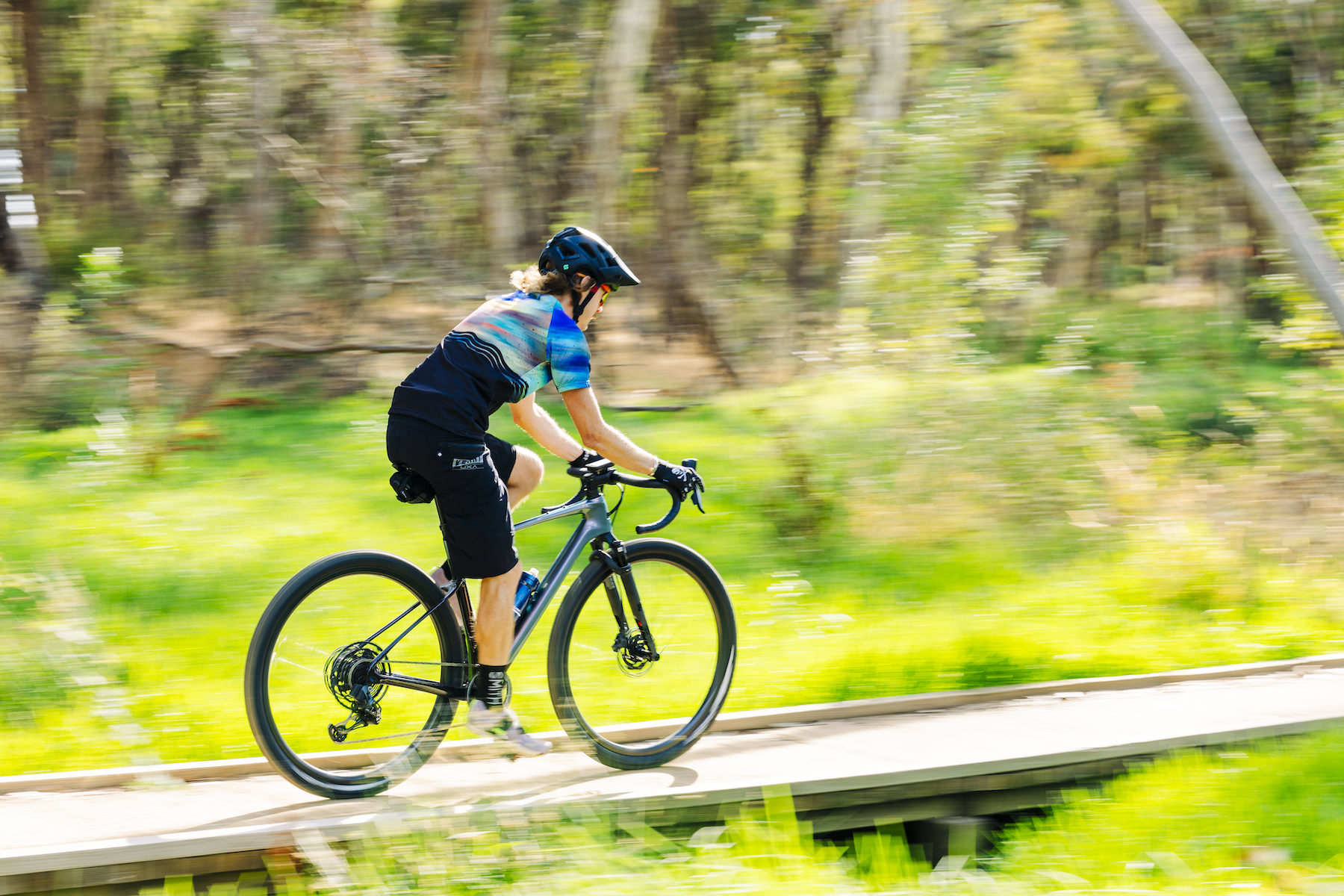
Case in point, during the last week of testing the new SRAM XX Eagle AXS transmission we had a small stick end up in the rear wheel of our Giant Revolt X gravel bike. It was a fairly innocuous event – the stick fell out after a brief pause at the pedals, and we carried along the trail. Five minutes later, as the AXS derailleur moved into the 52T sprocket there was some notable noise that alerted us to the fact that the derailleur was about to yeet itself into the spokes of the rear wheel. Sure enough, the hanger had been slightly bent, requiring a trip to the local bike shop to have it realigned. While it wasn’t the end of the world, it proved to be a timely reminder of just how flimsy and annoying derailleur hangers can be.
How will Shimano respond?
Since we laid our first pedal strokes on the SRAM XX Eagle AXS T-Type transmission last year, we’ve been pondering how Shimano might respond.
It’s been five whole years since XTR was updated, and during that time we’ve been waiting with bated breath to see whether Shimano would introduce a Di2 version to compete with SRAM’s AXS drivetrains. It’s 2023 and we’re still waiting, and now SRAM has the jump again with its clever direct mount derailleur.

Shimano has of course dabbled in direct mount designs in the past, with the original Saint groupset being the most notable example. More recently it developed a direct mount hanger that replaced the little B-link on its Shadow derailleurs. It offered a structural advantage that improved shift performance and simplified wheel removal, but unfortunately the concept didn’t stick around in the mountain bike world.
Will Shimano re-embrace the direct mount concept? Will it attempt to do something similar to SRAM? Or will it stick with the traditional derailleur hanger?
Or maybe the Japanese brand is simply less interested in innovation in the high-end mountain bike segment, and more concerned with producing Cues groupsets for the bulk of the market? Only time will tell, but given Shimano’s extensive component expertise, we would still very much love to see those muscles flexed.

Flow’s Verdict
Following six months of solid testing, it’s clear that the SRAM XX Eagle AXS T-Type transmission represents an evolutionary leap for the modern mountain bike drivetrain.
By getting rid of the hanger and replacing it with a chunky direct mount derailleur, shifting is faster, crisper and more dependable than ever before. It’s also ridiculously easy to setup, with no hanger to align, limit screws to adjust or B-gap to measure.
Eliminating these setup variables hasn’t just improved shift performance, it’s also helped to reduce the potential points of failure. Indeed it’s the strength and reliability of the direct mount design that represents the biggest improvement over the old Eagle AXS drivetrain.
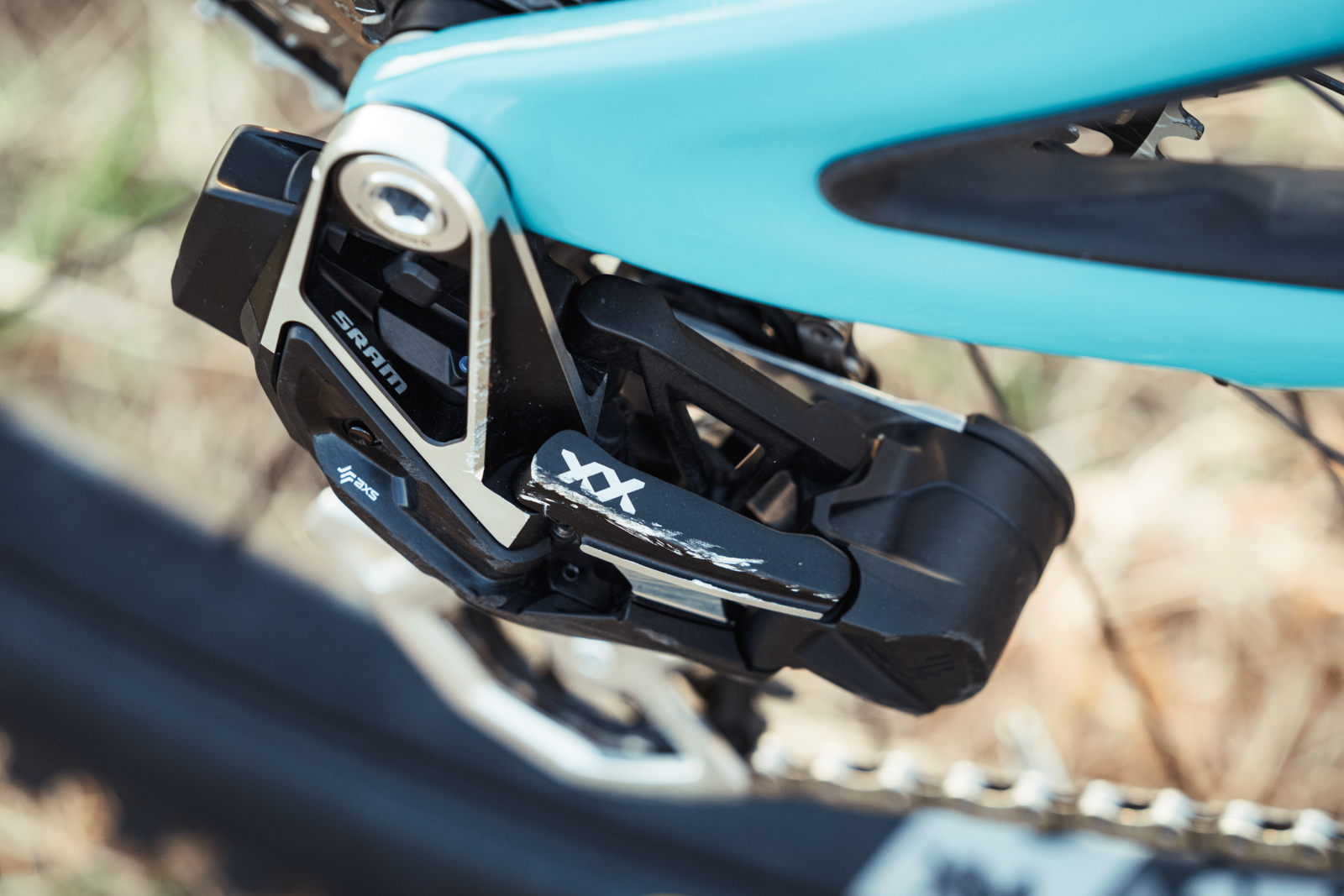
Despite all of the intended (and unintended) abuse we could dish out on our two XX Eagle AXS T-Type transmissions over the past six months, we’re still yet to experience a mis-shift or a dropped chain, let alone a broken derailleur. There are many stories behind the countless scars, but not one of them has ended a ride.
Of course all that innovation doesn’t come cheap, and the prices behind the new derailleurs, cassettes and chains will no doubt raise a few eyebrows.
We can’t argue with the performance and durability though, and we love that the derailleur is rebuildable. We also owe SRAM props for developing the first groupset that’s properly optimised around the 55mm chainline. It works exceptionally well, and it may spell the beginning of the end for the Super Boost standard.
We look forward to seeing SRAM eventually trickle down its new T-Type transmission to a more price-friendly GX level, and perhaps even further. As to how Shimano will respond, if at all, is yet to be seen. Regardless, there are no doubts that this is the best mountain bike drivetrain we have ever had the pleasure of using.
As if that wasn’t enough, SRAM has also released a bunch of new Code and Level brakes today too, which you’ll have spotted in some of the photos here. If you’re curious to know what’s changed, see our SRAM Code Stealth brake review for everything you need to know.



